If you have arthritis in your joints, it's important to be mindful of the types of exercises you engage in. High-impact activities, such as running, jumping, tennis, or other intense sports, although they help circulation, can put a lot of strain on your joints, making your pain and inflammation worse and could increase the risk of joint damage over time.
However, that doesn't mean you have to avoid exercise altogether - absolutely not!
As for smaller exercises that you can fit into your daily routine, they can be a great help. Whilst not a cure, it’s been proven that exercises for arthritis can work wonders for joint pain, mobility, and stiffness. If you’re one of the 53 million people in the US living with arthritis, practicing these easy hand exercises for a few minutes a day might be just the thing to make your day-to-day that bit easier. Give them a go and see for yourself!
Understanding Arthritis in the Hands
Before we get into the nitty gritty of your new arthritis exercises, it’s important to understand what it is we’re dealing with here. Already clued up? Click below to skip straight to the exercises.
What Causes Arthritis in the Hands and Fingers?
Arthritis is a very common condition affecting millions of people in the US alone. When we think about arthritis, most people usually think of it as something that only affects the elderly. However, research shows that there are a whole host of non-age related factors that can cause joint inflammation. From broken bones to repetitive motions like pinching and grabbing, to a staph infection and our genes, the causes of arthritis run much deeper than simply getting older. Because we use our hands and fingers so much, it’s normally one of the first places we’ll notice arthritic pain and swelling, and one of the trickiest to live with.
Common Symptoms of Hand Arthritis
There are over 100 different types of arthritis, each with its own unique combination of symptoms. Generally, more common symptoms affecting the hands include:
- Pain: sore, achy hands and fingers that start off coming and going, get worse with use and better after rest, and can either become more constant or go away altogether.
- Bumps and lumps: common in osteoarthritis, you might get small bony bumps on your finger joints or painful, fluid-filled lumps on the backs of your fingers.
- Stiffness: the range of motion in your hands and fingers gradually gets worse and you’ll find it difficult to open and close your hand.
- Weakness: difficulty in doing things that used to be easy, like opening jars and unlocking doors.
- Swelling: the inflammation in your joints can cause your hands and fingers to become red, warm, and swollen, sometimes feeling tender to the touch.
How Arthritis Affects Hand Mobility and Strength
Because hand arthritis creates inflammation in your joints and wears down important tissues like cartilage and synovium (the outer covering of your joints), your tendons and ligaments have to work much harder to move about, and your bones might start to rub against each other. This causes pain and swelling, which makes movement incredibly difficult. Since you’re not moving your joints as much, the muscles in your hands begin to waste away, creating weakness and making it even harder to move.
Why Hand Exercises Are Important for Arthritis Relief
Think of it like learning a new hobby - the more you practice, the easier it becomes. If you keep skipping practice, you’re going to find it harder to keep up. It’s the same with our muscles! The more we keep them moving, the stronger they get, and the easier we’ll find using them. Hand exercises can also improve blood flow, reduce inflammation, and reduce stiffness, all of which keep us able to live independently and slows down the progression of arthritis.
5 Easy Hand Exercises for Arthritis Pain Relief
Now we know why we need to practice our hand, finger, and thumb exercises for arthritis, let’s take a look at how we go about it. Each of these exercises is easy to slot into your day-to-day and only takes a few minutes to complete. Make sure to stop your repetitions when you start to feel pain and slowly build up to more as your flexibility improves - remember, slow and steady wins the race.

1. The Tabletop
Great for movement in your third knuckle, also known as the MCP or metacarpophalangeal joint. Think of it like making a tiny imaginary tabletop with your hand; the flatter the better.
- How it works:
Keep your wrists and fingers nice and straight, bend your fingers at the third knuckle so your fingers are perpendicular to your hand. Slowly bring your fingers back up and repeat, focussing on those straight, strong lines.
2. Hook-Fist
Now we’re moving on to our other knuckles. This is a 3-step exercise that engages your whole hand, working on that full range of motion in your joints.
- How it works:
Start with your hands stretched out, keeping your fingers as straight as possible. With a straight wrist, bend your second knuckles into a hook shape with the tips of your fingers meeting the top of your palm. From there, move into a strong fist, tensing and stretching each joint, and hold for 3-5 seconds. Move back into the hook, then back up to a flat palm, and repeat.
3. Finger O’s
This exercise allows you to focus on each finger individually, which can help detect specific problem areas and lock in on those micro-movements.
- How it works:
Begin this exercise with your hand open wide, stretching your fingers out straight. Then, touch the tip of your index finger to your thumb to create an ‘’O’’ shape, then return to that wide stretch. Repeat with each finger until you’ve done your whole hand, then go back to the beginning and start again.
4. Table Spread
For this one, you’ll just need a table or a desk. You can use talcum powder or a tissue to reduce friction if you need.
- How it works:
Rest your hand palm-down on the table. Slowly spread your fingers apart, then bring them back together again, pushing into the table. Repeat if possible.
5. Wrist Circles
Now our hands are stretched and flexed, it’s time to look at the wrists. This exercise is incredibly easy, and important to add in with the rest of your hand routine.
- How it works:
Make a soft fist and slowly move your wrists in a circle, making sure to get every nook and cranny of the joint.
Watch our video on the 'six pack' hand exercises here.
Additional Tips for Managing Arthritis in the Hands
1. Heat therapy
Just like a hot water bottle is great for stomach cramps, heat packs can be excellent for joint pain, inflammation, and mobility. You can buy a range of types, sizes, and styles to fit different purposes and activities, or you can try a simple hand soak in warm water.
2. Assistive devices
There are plenty of innovative products that help make your daily activities easier and less painful. Zipper pulls and buttoning aids are great for helping you get dressed independently, whilst large rubber handles and fixed jar openers are perfect for cooking and preparing food. There are even products out there to help with hobbies like gardening and crocheting for the crafty folk among us!
3. Lifestyle changes
We all know a healthy lifestyle is important. Living well won’t cure arthritis, but it can help improve symptoms and reduce inflammation. The two big ones are quitting smoking and keeping a healthy weight. Smoking increases inflammation and reduces circulation, which can make arthritis worse, and being overweight can put unwanted pressure on your joints. Whilst there is no evidence that specific diets can treat arthritis, a balanced diet containing all the necessary vitamins and minerals can be extremely beneficial.
4. Rest
One of the worst things you can do for sore joints is push them too far. It’s important to get lots of rest to allow your joints to heal inflammation. This can do wonders for your pain and make recovery from flare-ups much easier. You wouldn’t go for a jog on a broken leg, so don’t push yourself too hard with your joints!
5. Medication
There’s a whole world of incredible medications that help with arthritis. From painkillers to anti-inflammatories and steroids, there are many different combinations to try and it’s often a process of finding the right treatment for you, striking a balance between benefits and potential side effects. Always consult your doctor before trying any new medication and follow their advice on what to take and how to take it.
6. Compression therapy
Compression therapy is an excellent, low-effort way to manage arthritis in the hands. All you need to do is pop on a glove, sleeve, or brace, and you’re good to go! Compression therapy increases blood flow to the area whilst supporting the joints and pushing out unwanted fluids. Find our range of pretty, soft, and functional compression garments here.
FAQS for Arthritis Exercises
Q: What exercises are good for arthritis?
A: The best exercise for you completely depends on your symptoms, severity, mobility, and where your arthritis affects you. We’ve listed a few great ones for those struggling with pain and mobility in their hands, but there are many more out there that cover different areas. If you’re unsure, speak to your doctor for advice.
Q: How many repetitions should I do?
A: Again, this varies from person to person. We’d recommend starting out with 3-5 and going from there, increasing repetitions as your mobility increases. If any of these exercises start to hurt, stop and try again another day - do not push yourself into feeling sore, as this can cause injuries to your joints and make pain and mobility worse.
Q: Doesn’t pain when exercising mean it’s working?
A: Not always. When it comes to arthritis, pain when exercising can mean you’re causing more inflammation and injuring the joints. Stress is good because it makes the muscles stronger, but pain isn’t. That’s why it’s important to start out slowly and increase over time.
Q: My joints are too stiff to do these exercises correctly, what should I do?
A: These exercises are designed to reduce stiffness, so don’t let stiff joints put you off! We’re looking at progress over perfection, so it’s okay if you can’t bend your fingers flat or straighten out your hand straight away. Do what you can without causing pain and you’re likely to see improvement over time! If stiffness is severely limiting your movement, seek medical advice.
Q: How does exercise help arthritis?
A: Exercise helps arthritis in lots of ways. Firstly, it strengthens the muscles around the joints, helping to support them and take the strain off the joint itself. Exercise can lubricate your joints by creating synovial fluid, which helps them slip around easier, reducing stiffness and helping them to move nicely. Exercise also increases circulation, which helps reduce inflammation and strengthens bones, which can help you avoid common drug side effects like osteoporosis.
Q: Can exercise help with fatigue?
A: Absolutely! Those with arthritis know too well about the waves of fatigue that come with the condition. Physical activity in any form can give us all those awesome mood-boosting hormones that help us maintain energy levels and help us fall asleep easier as well.
Start with Compression Gloves & Braces for Arthritis
If you’re looking for ways to help arthritis in your hands, why not try our range of compression gloves and braces? Great for reducing pain and inflammation whilst improving mobility, our compression garments do good and look just as wonderful! Find your fit here and start your Grace & Able journey.
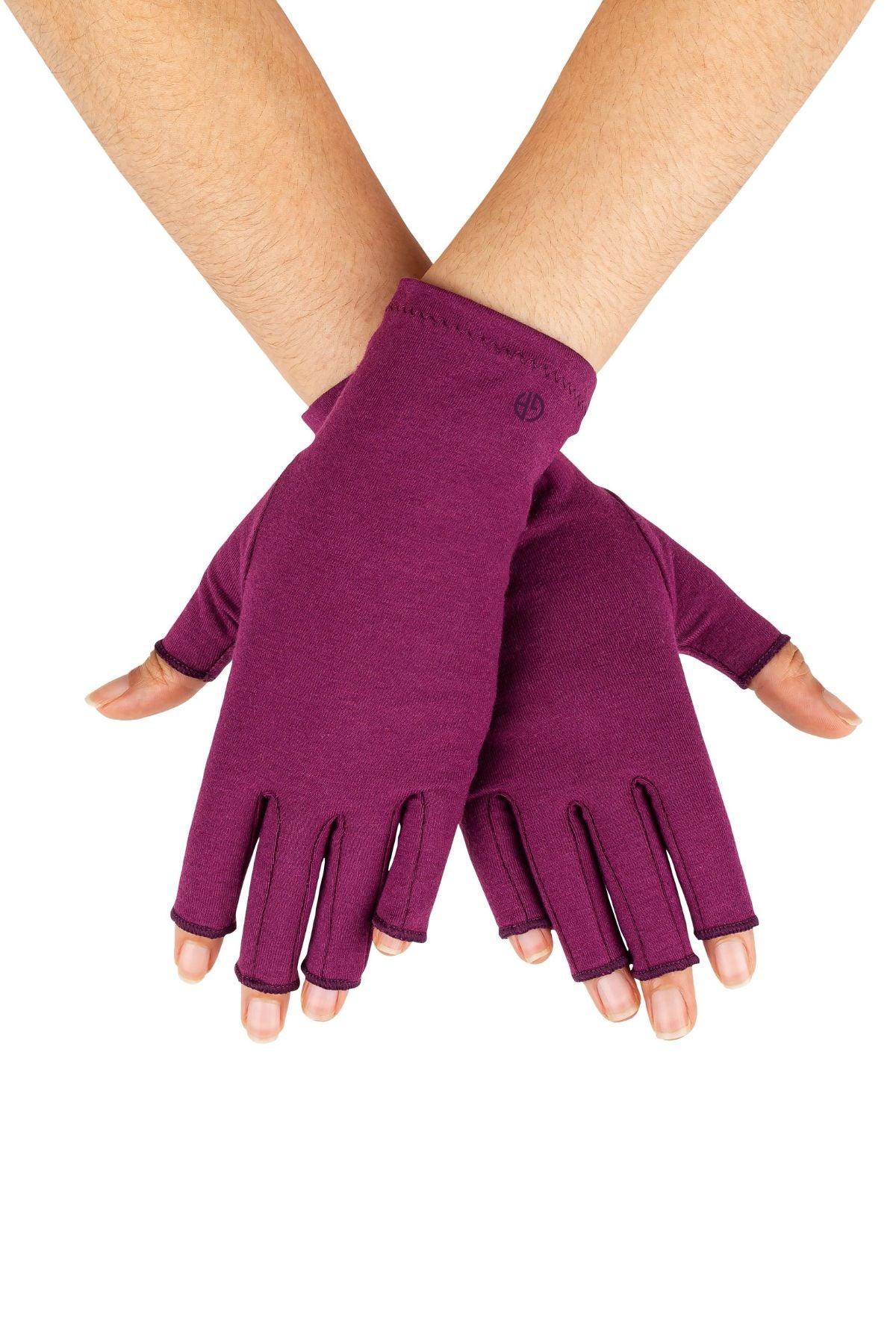
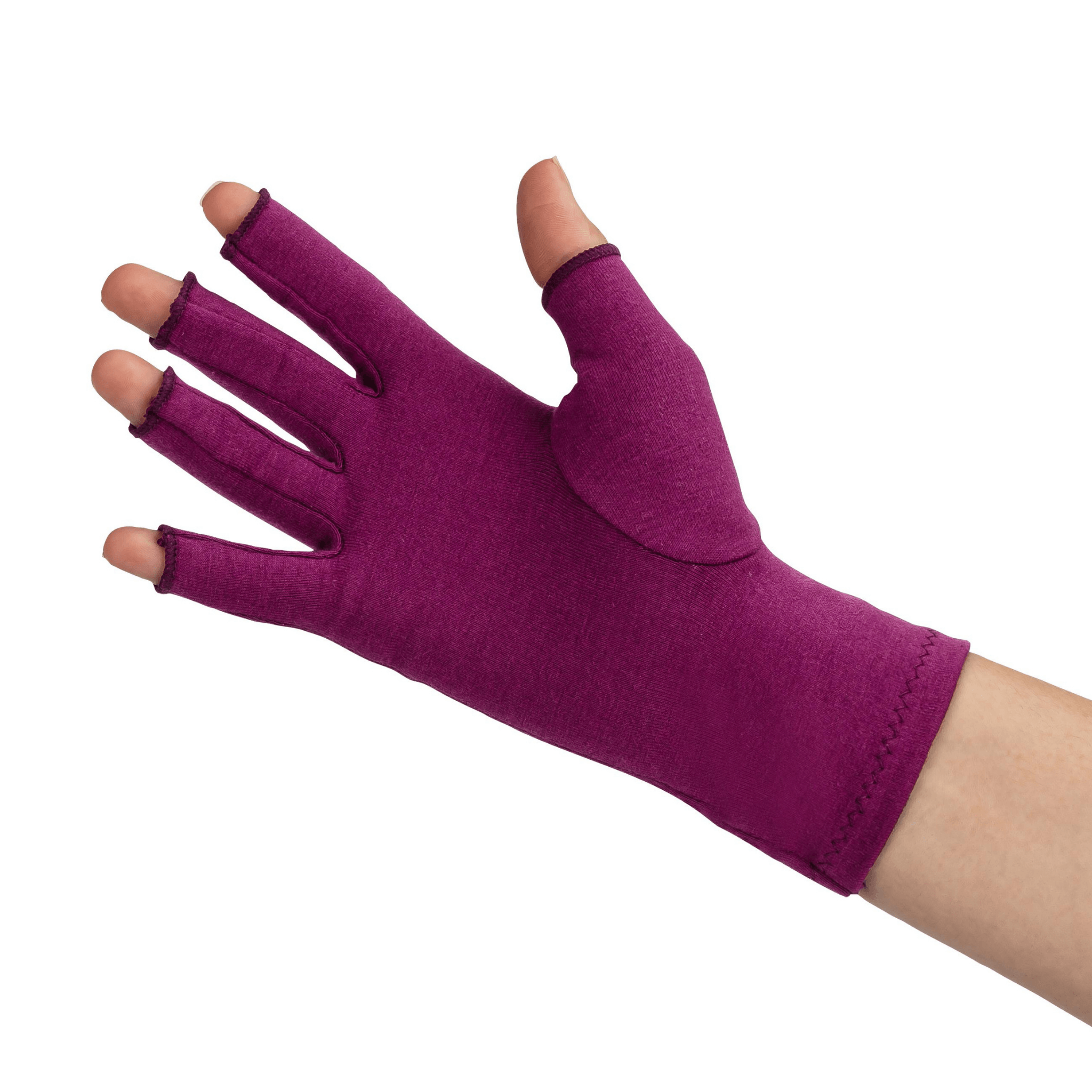
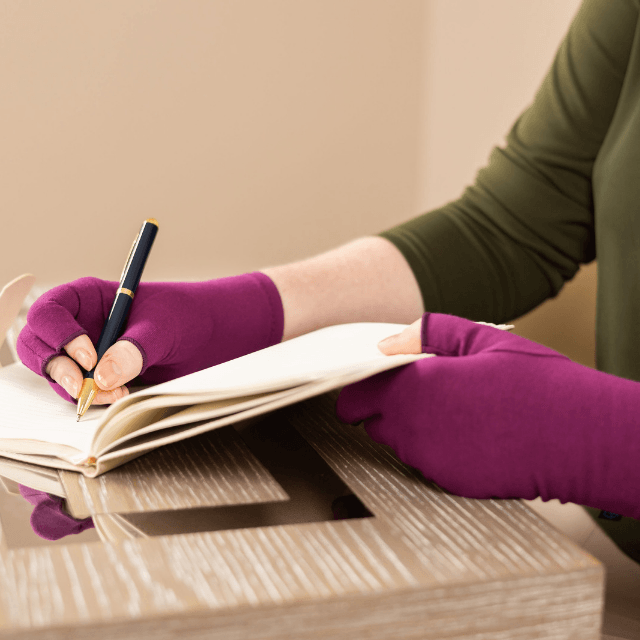
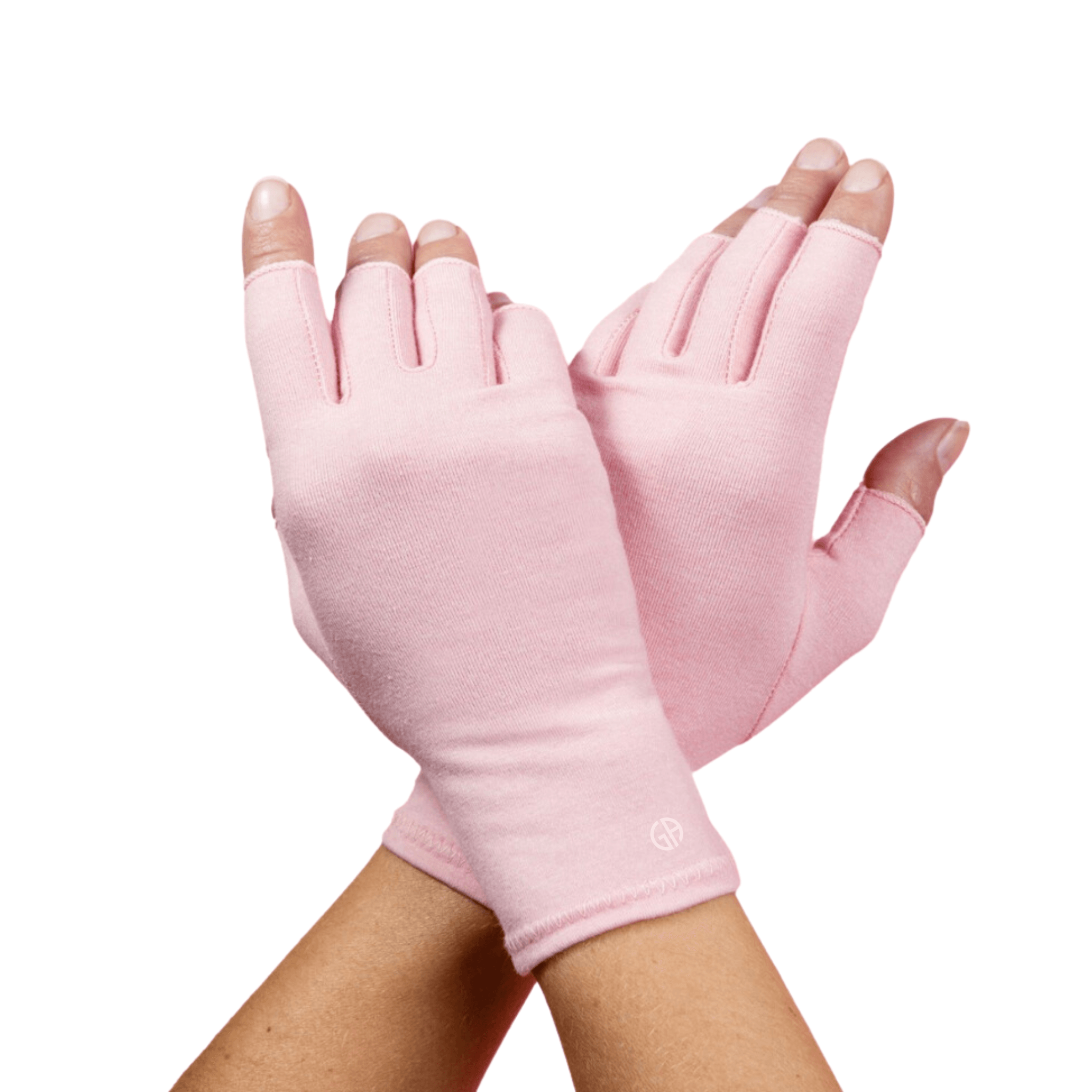
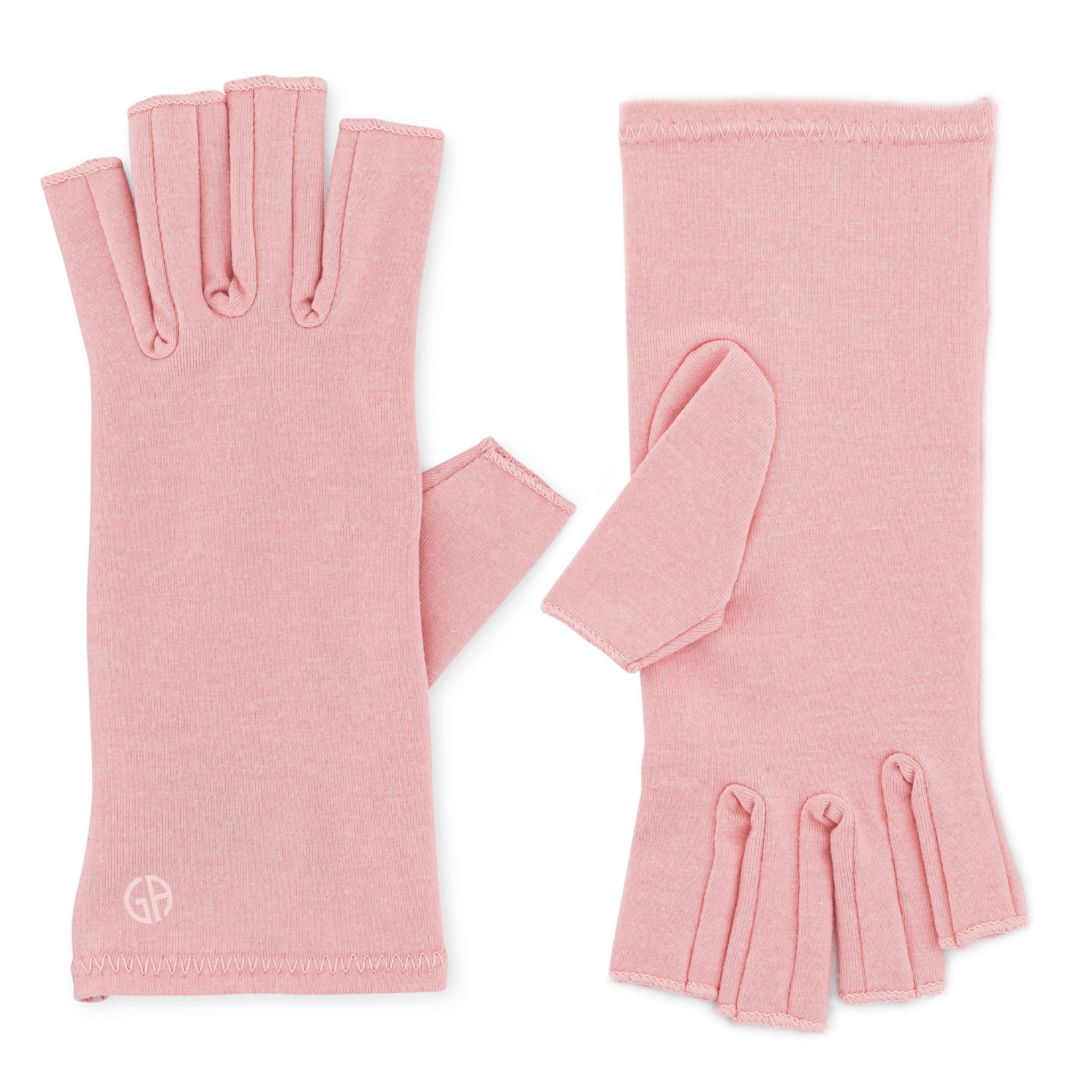
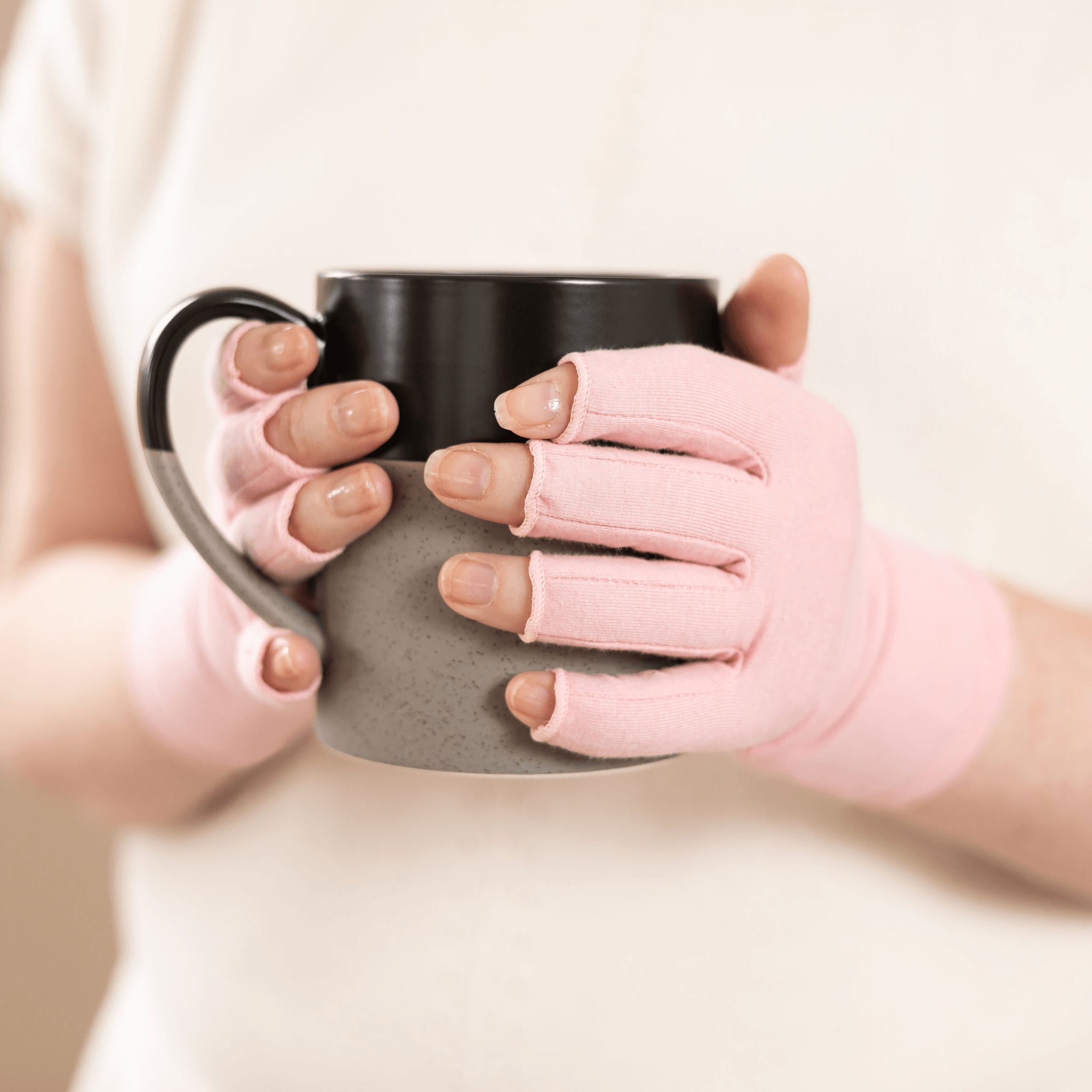
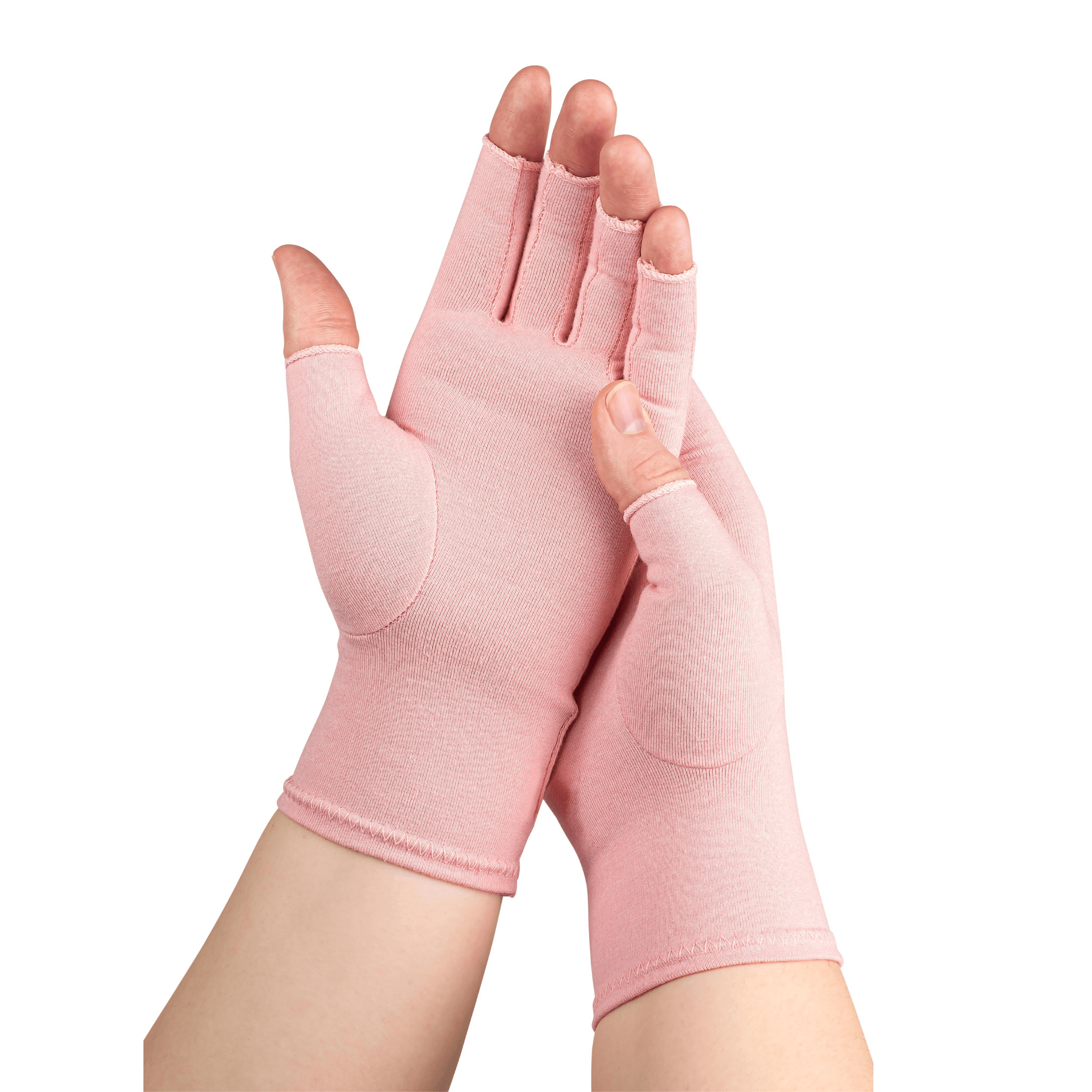
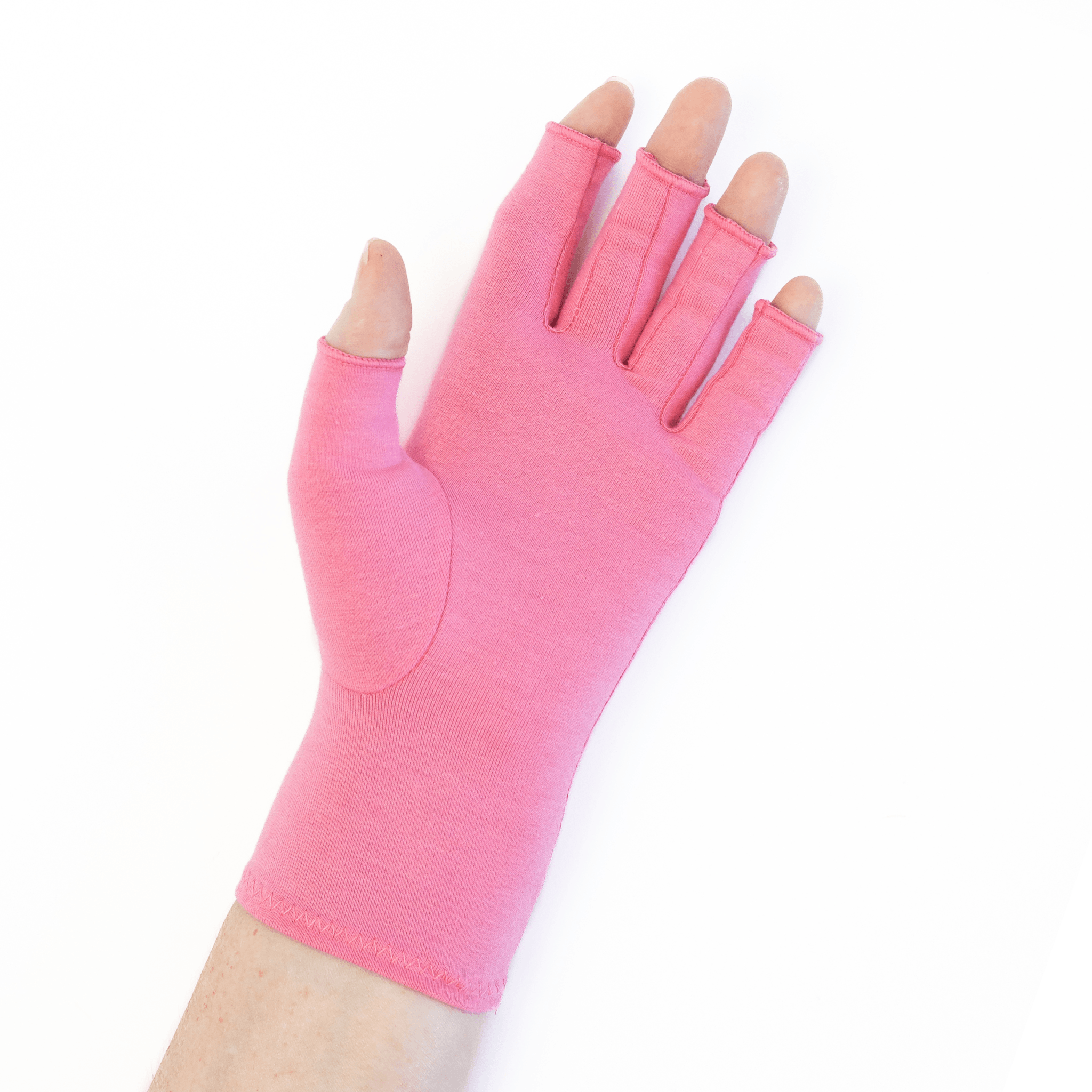
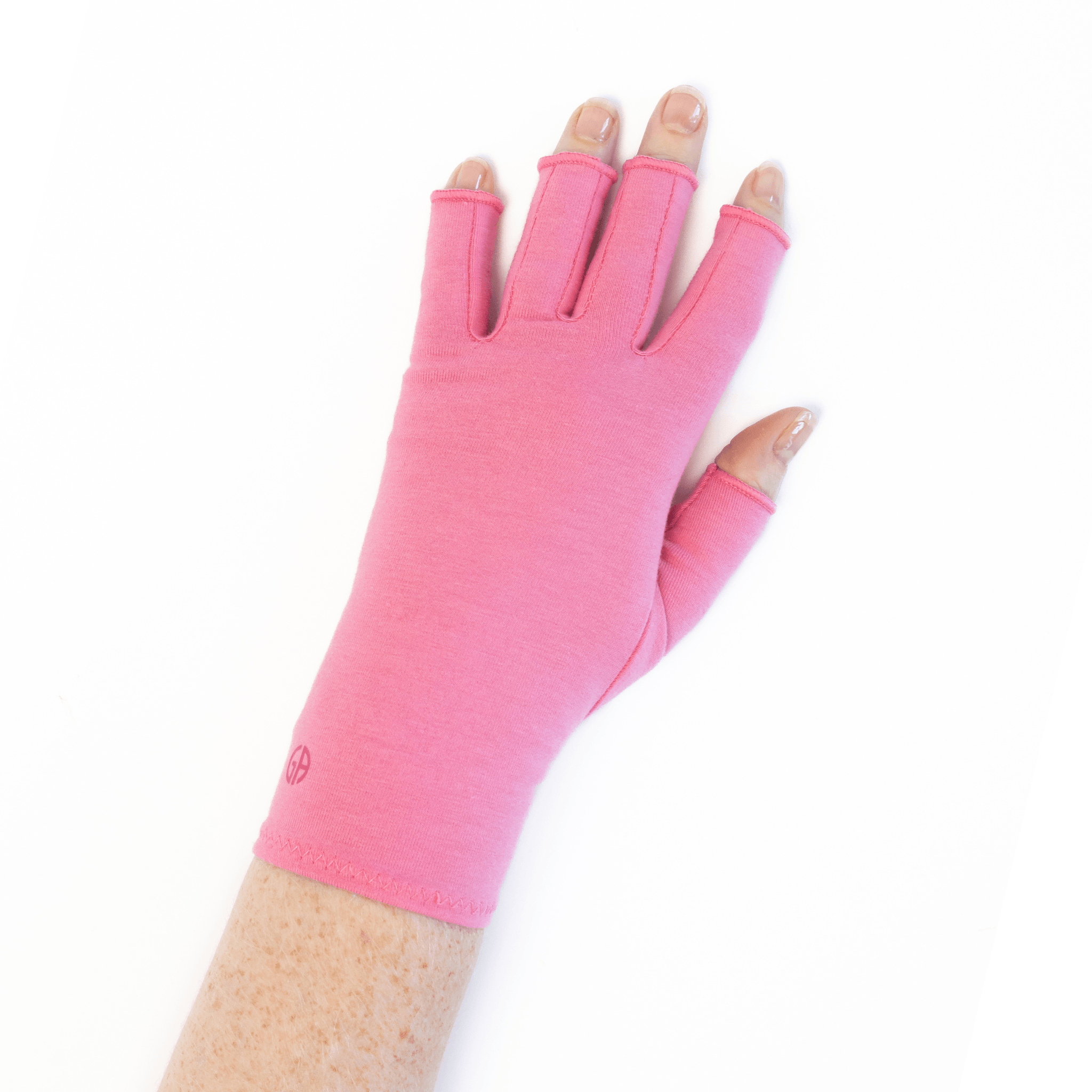
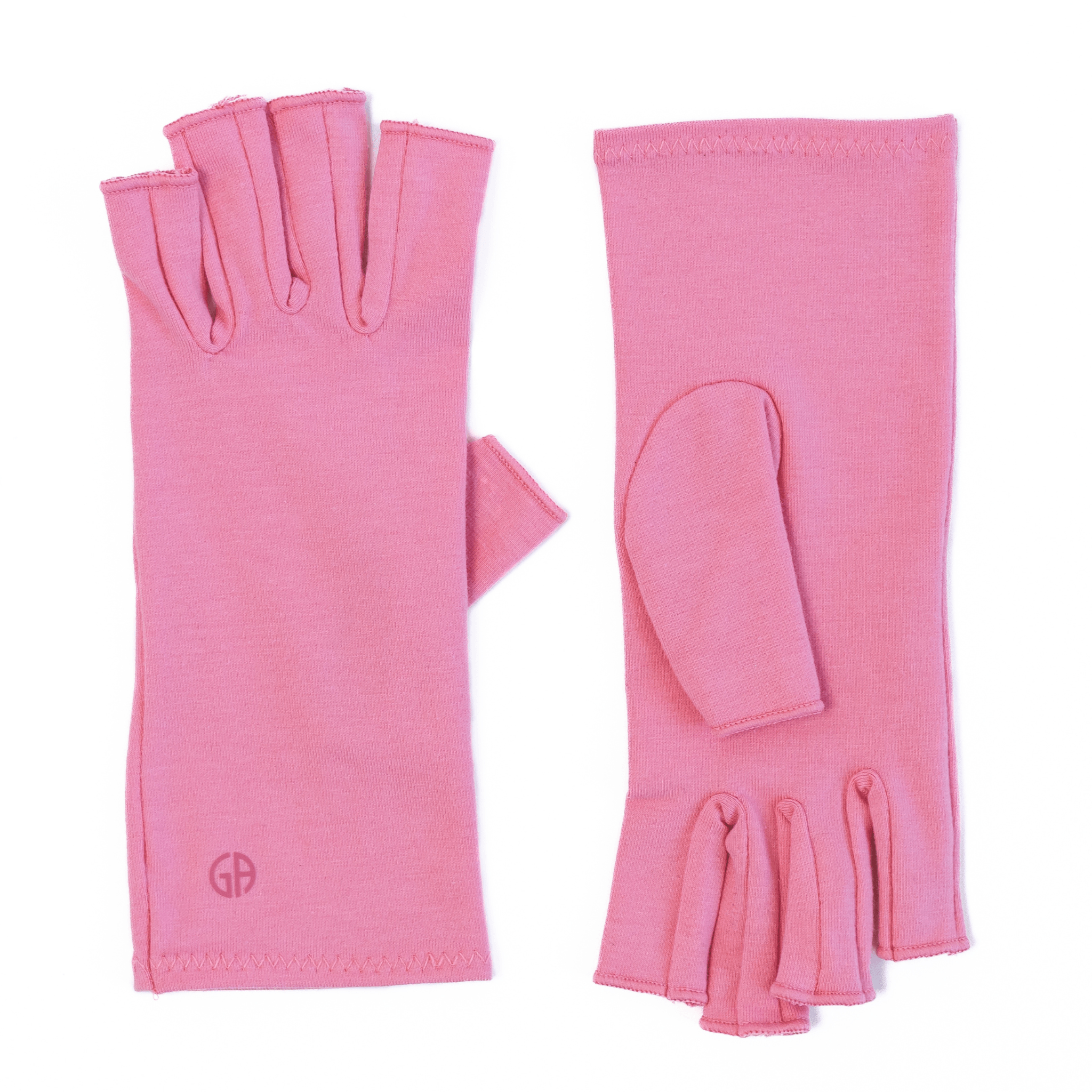
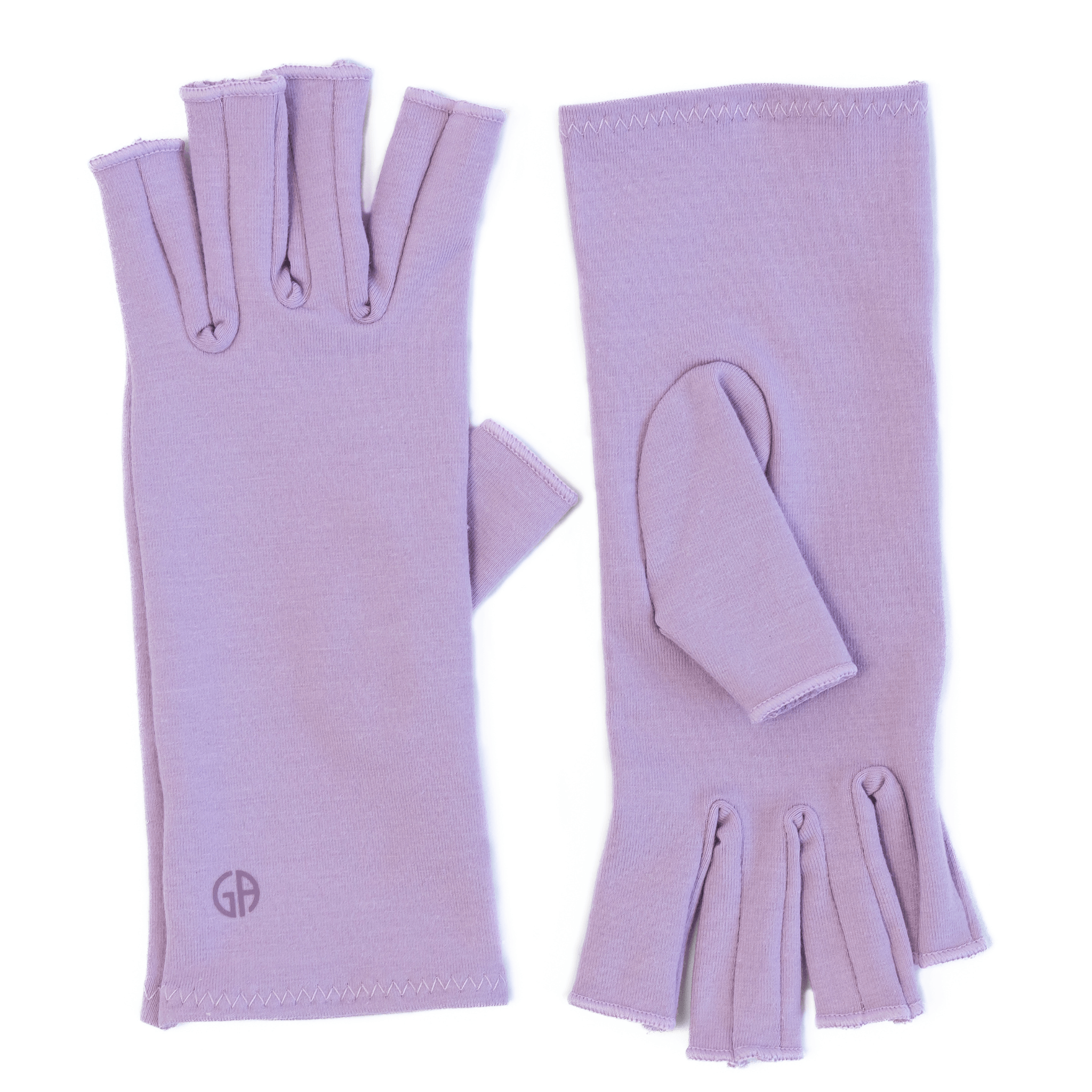
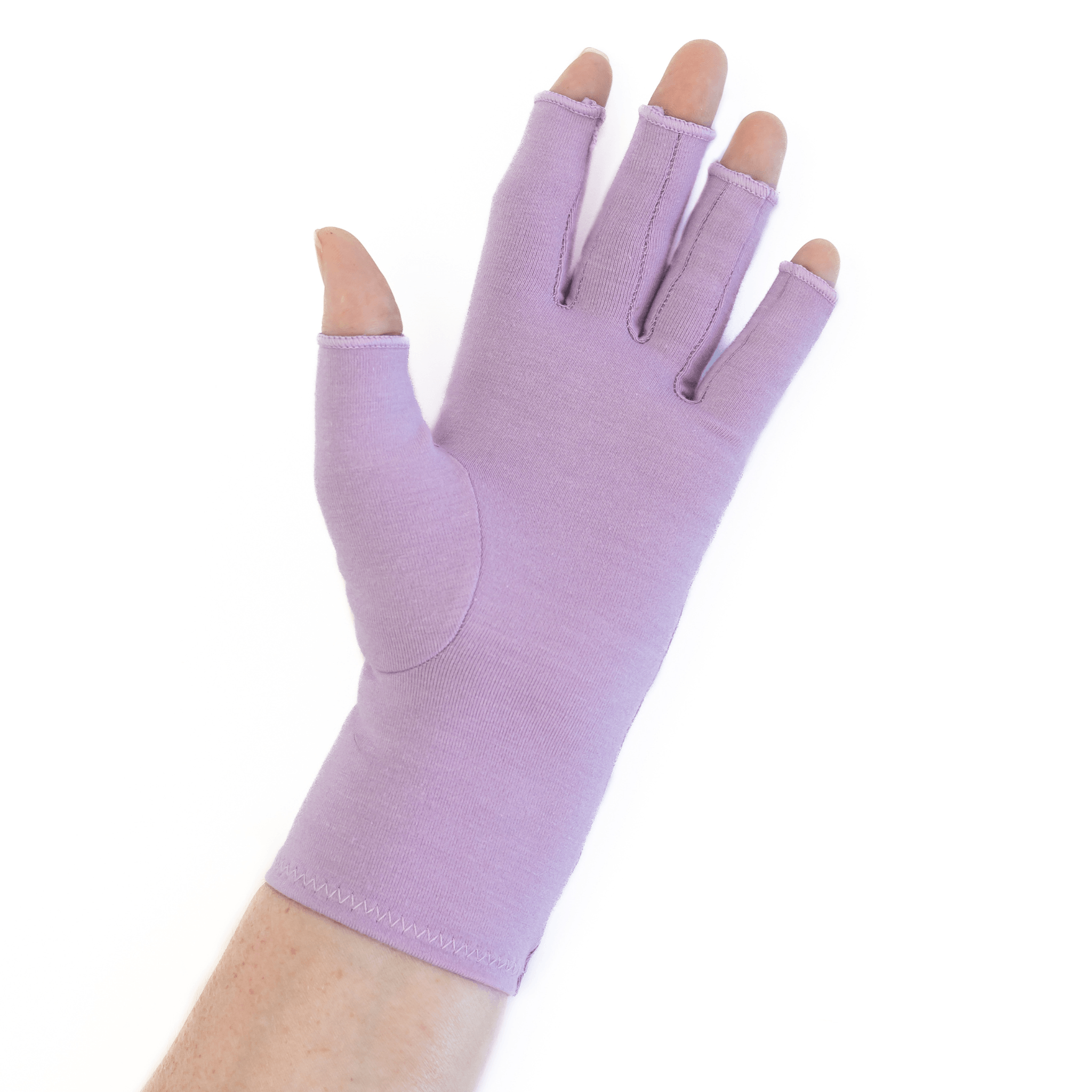
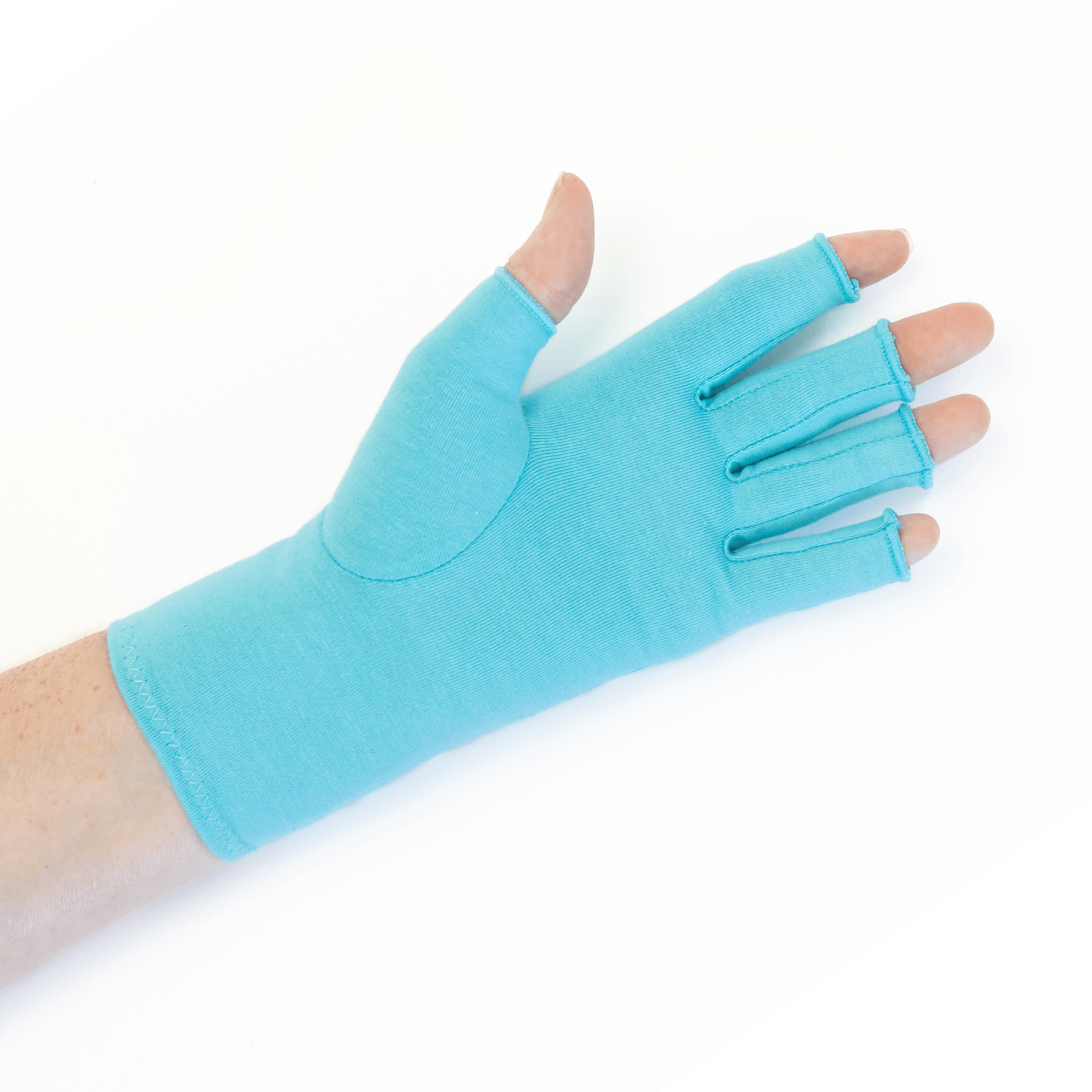
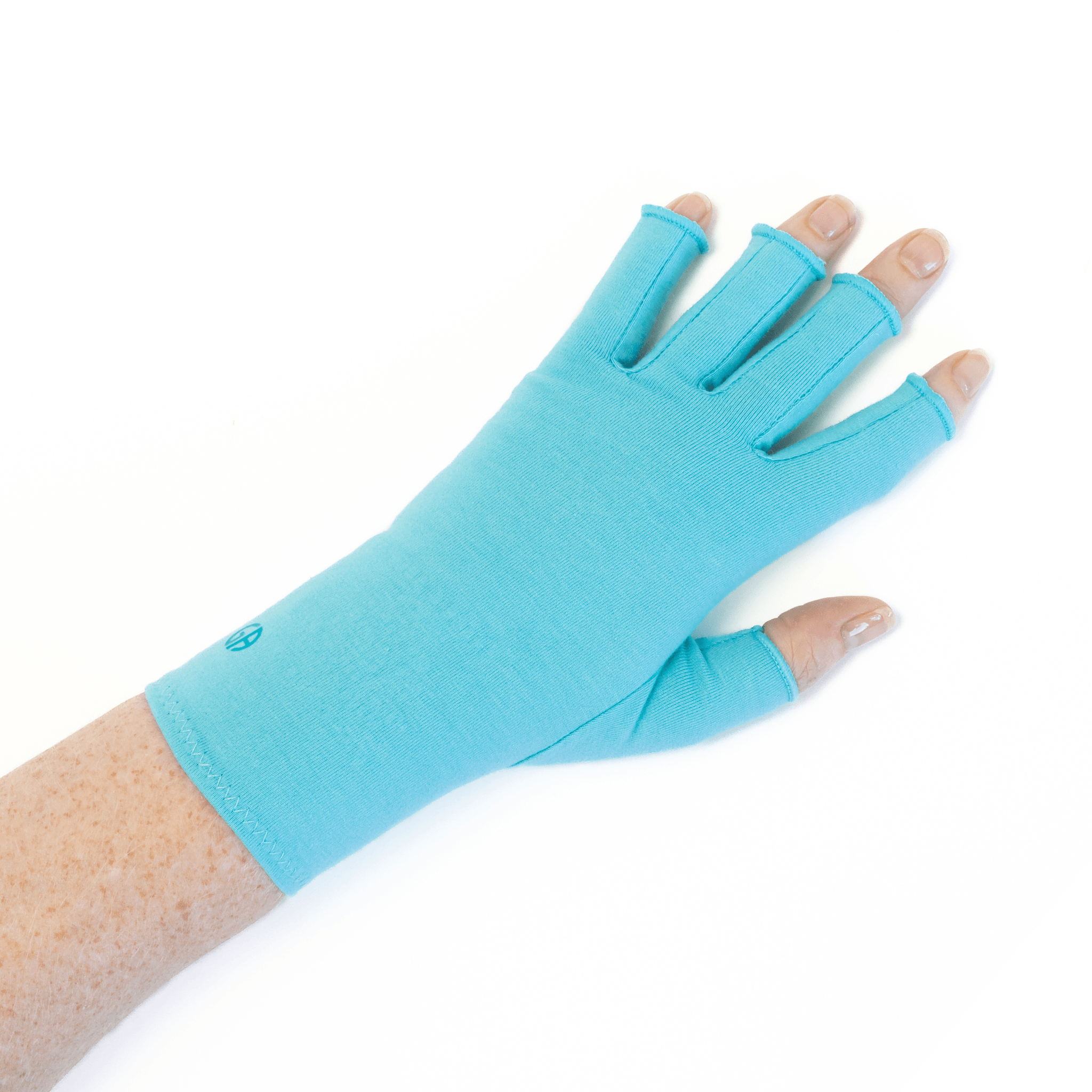
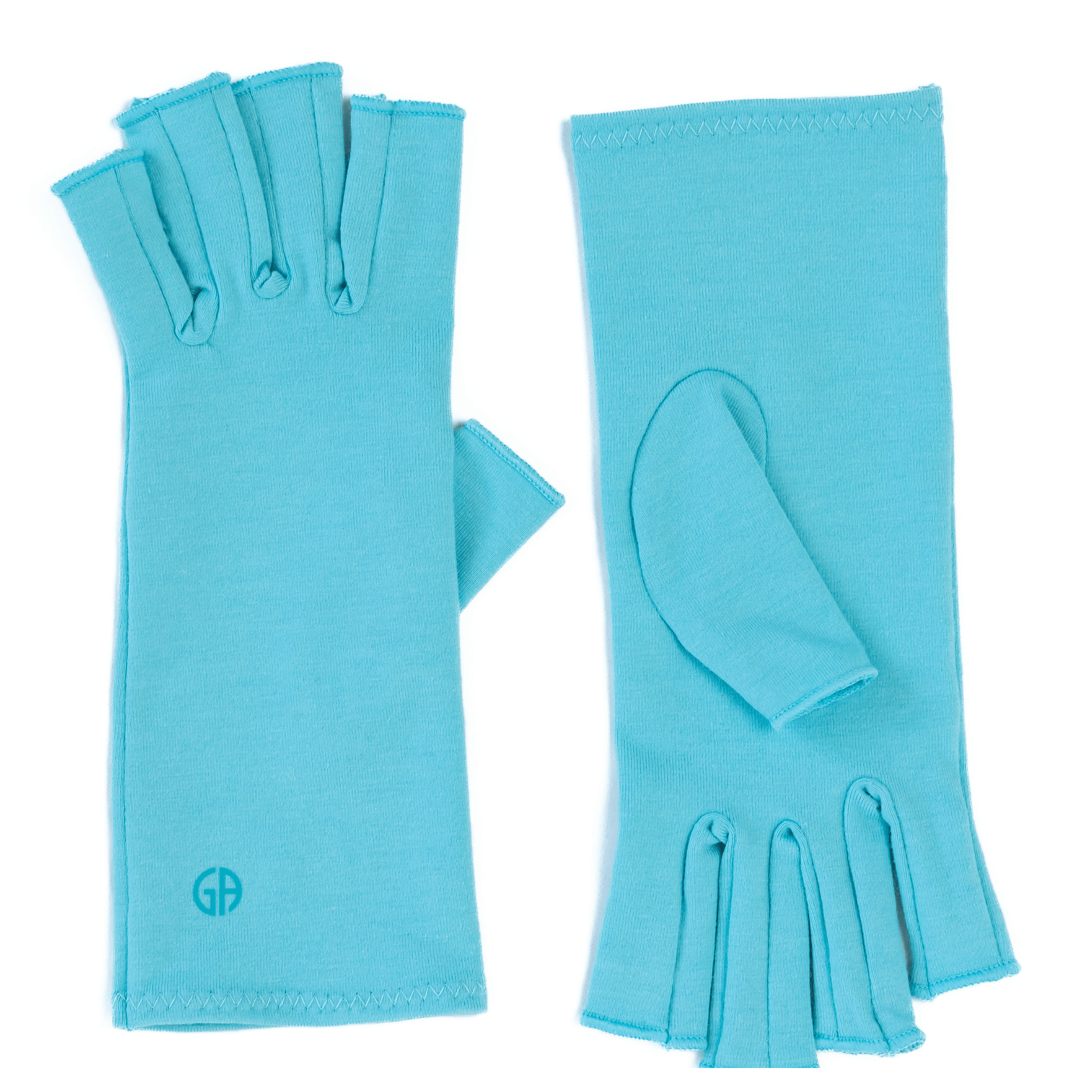
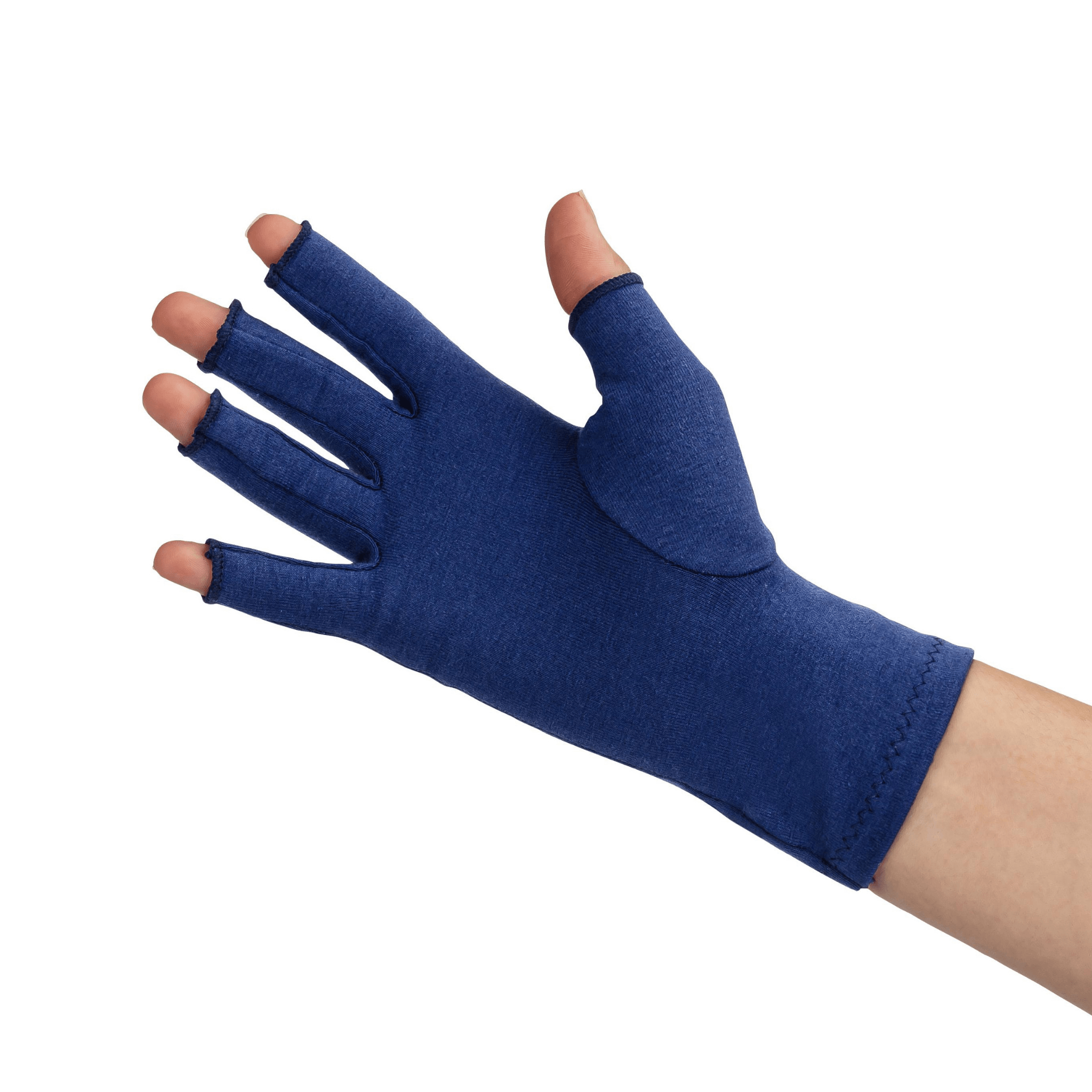
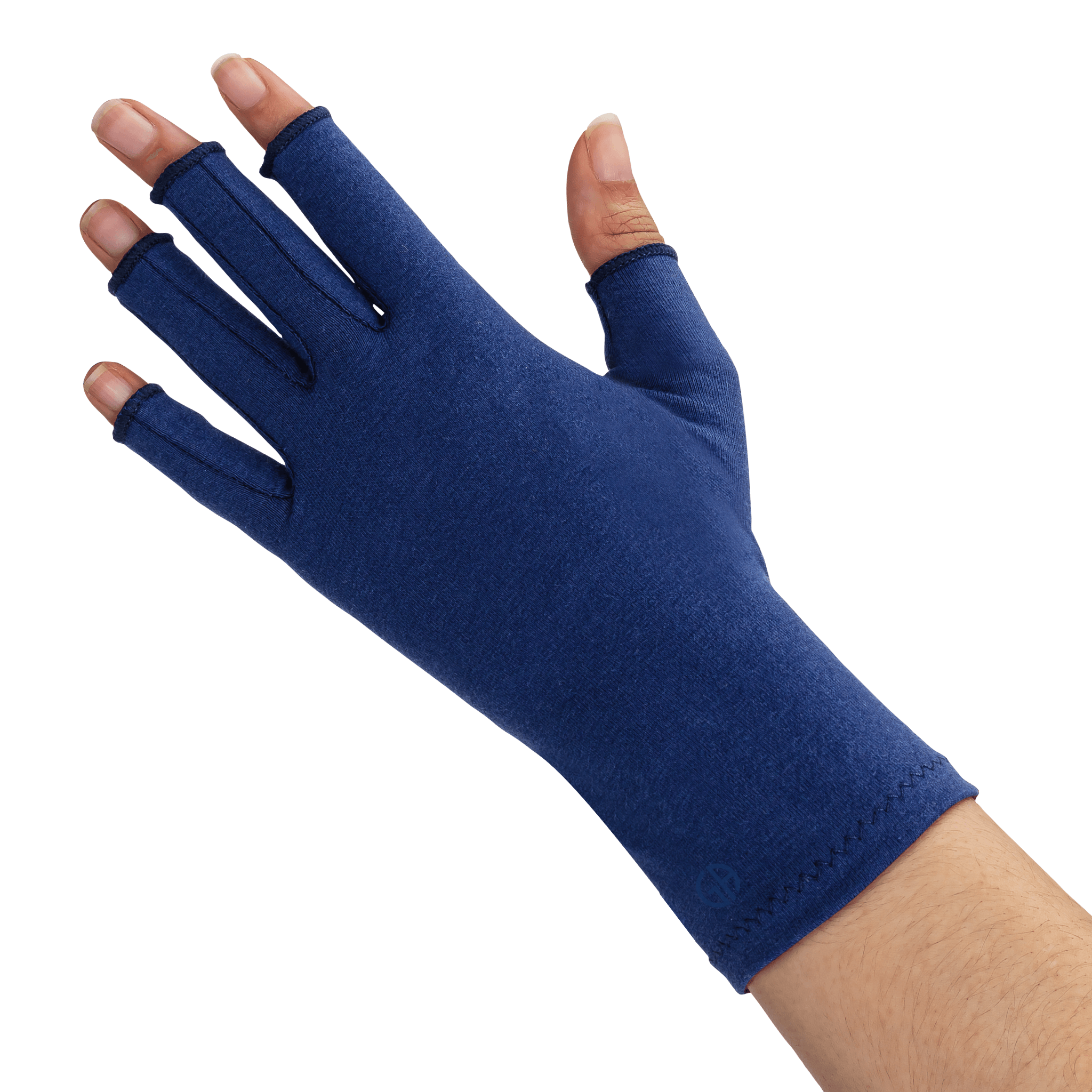
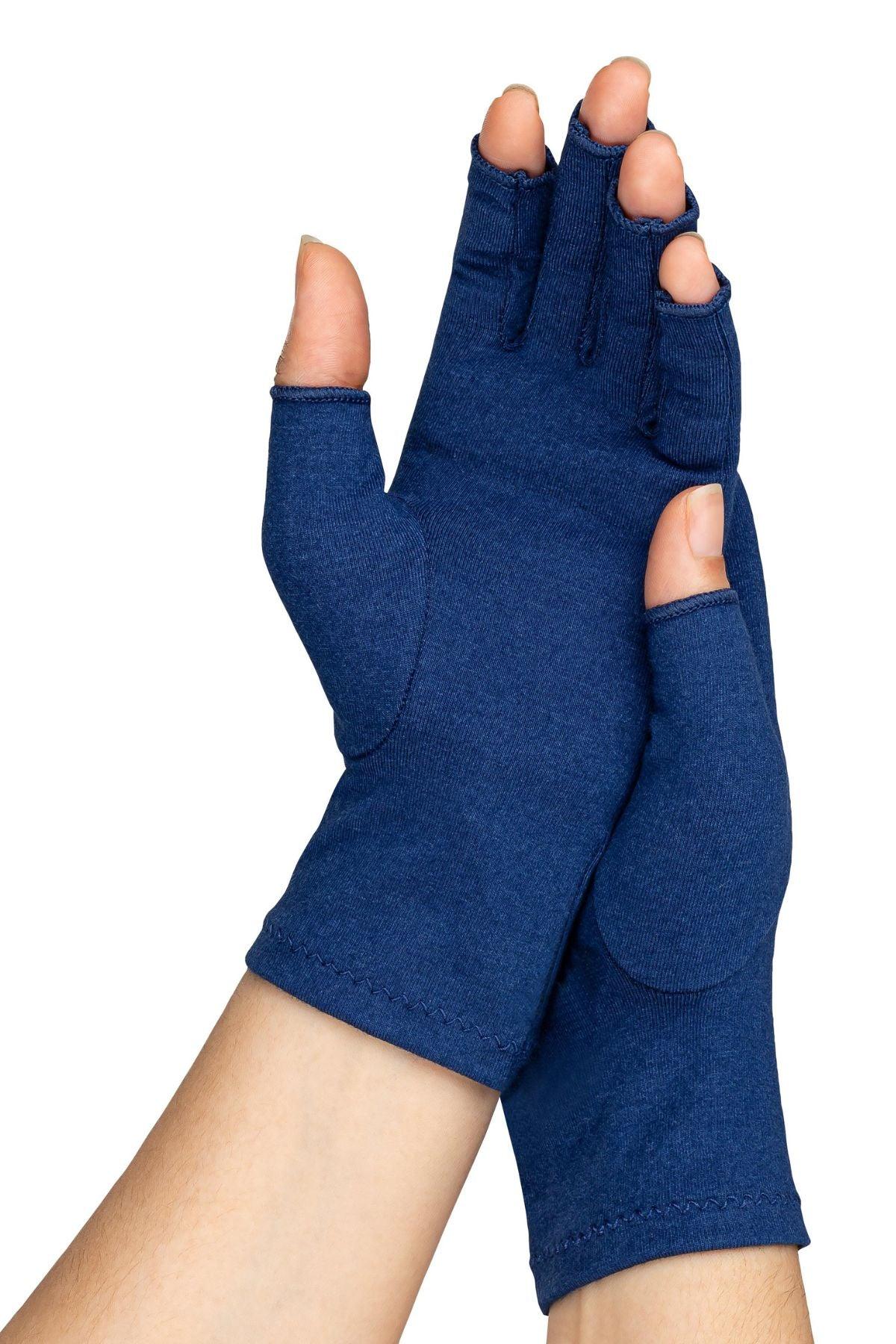
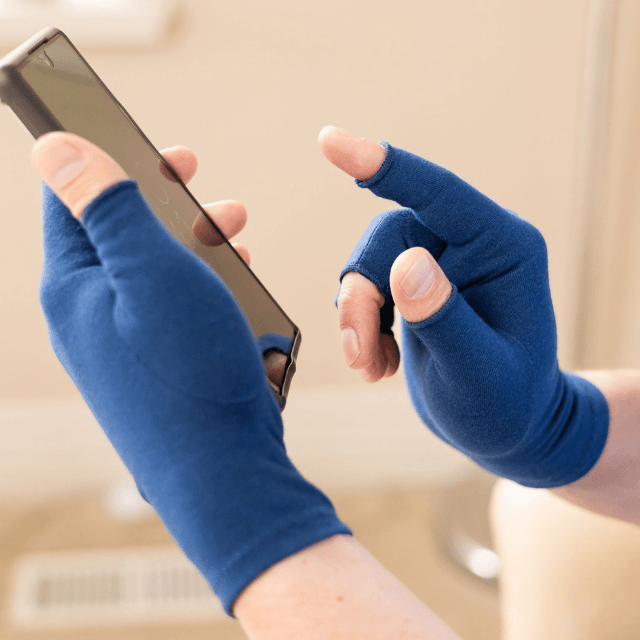
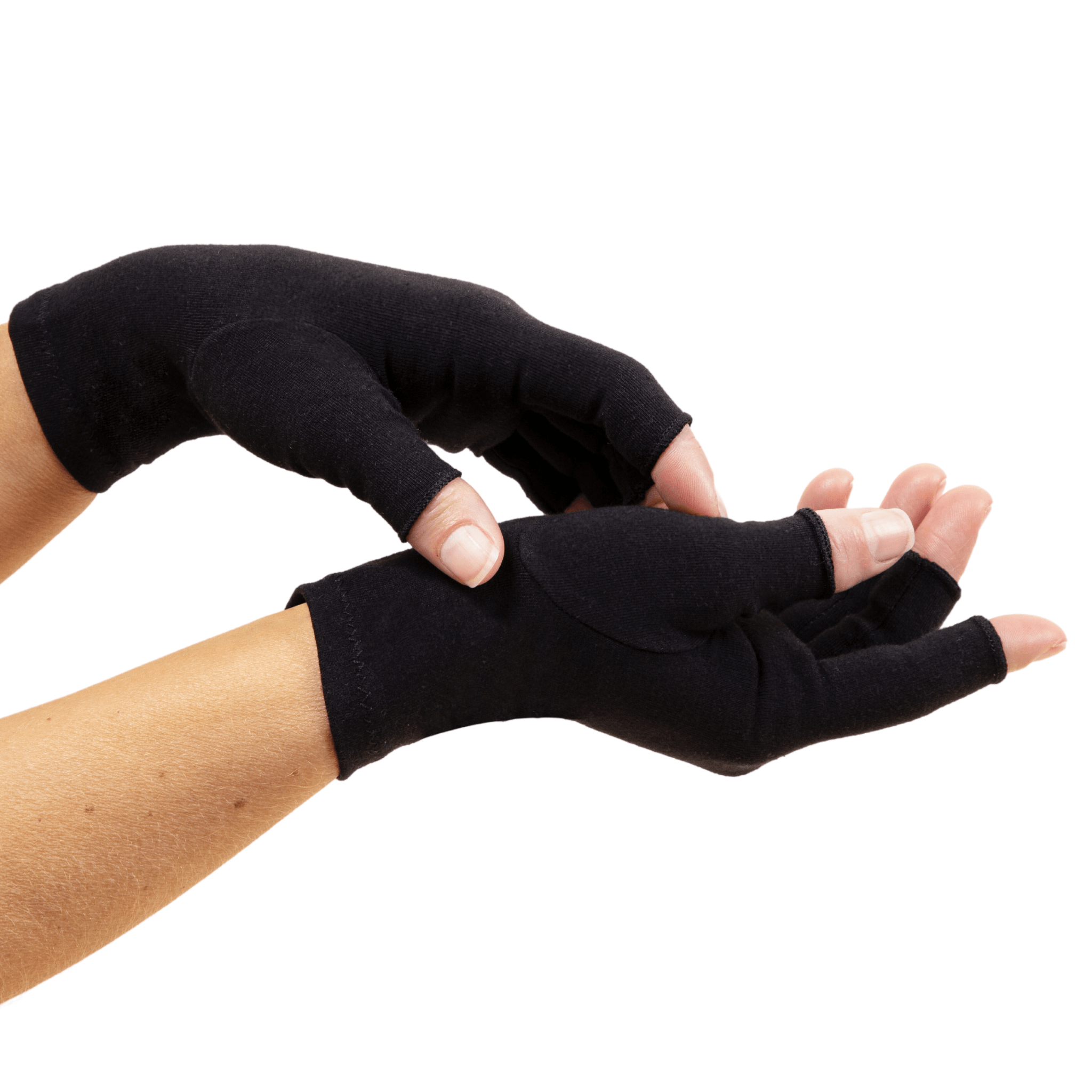
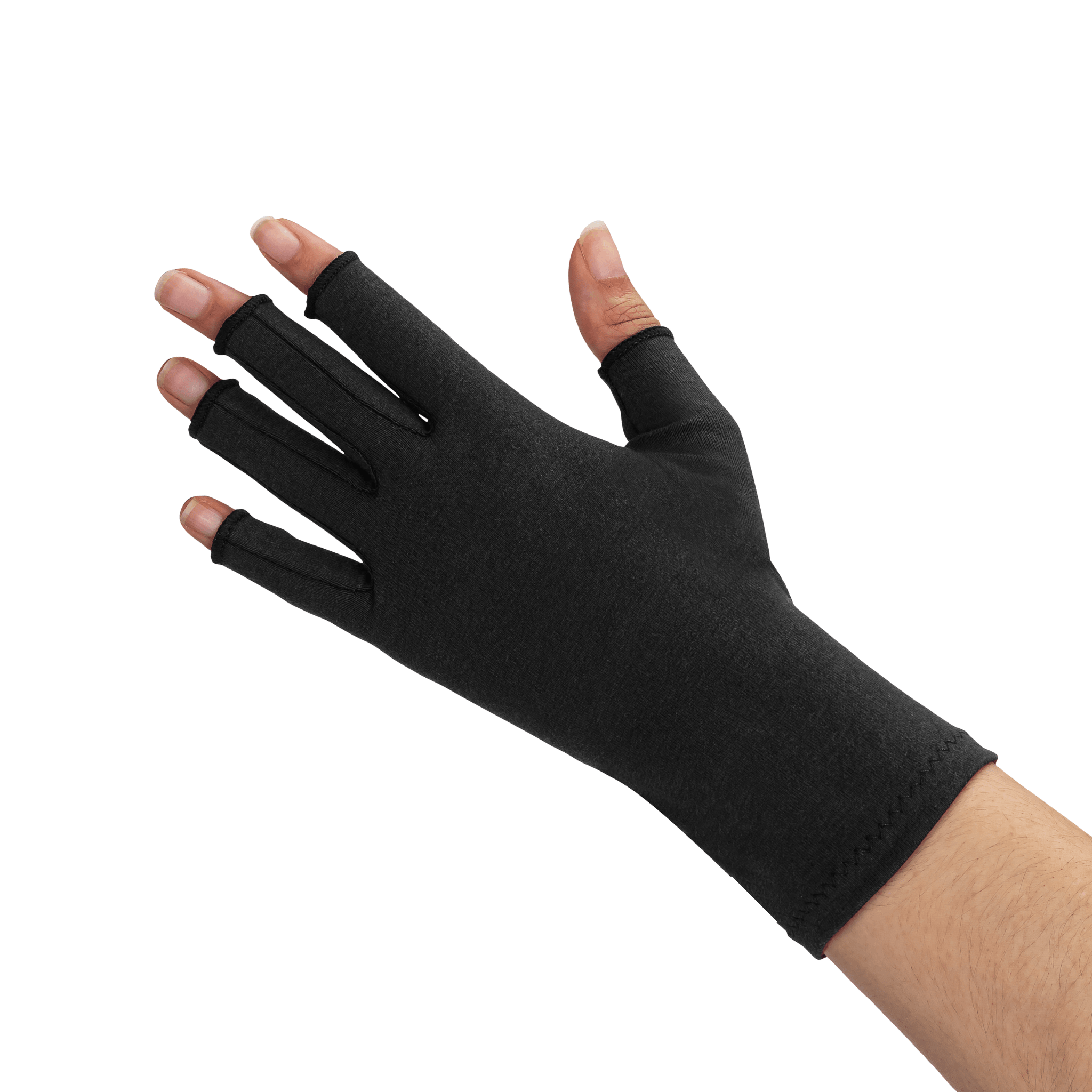
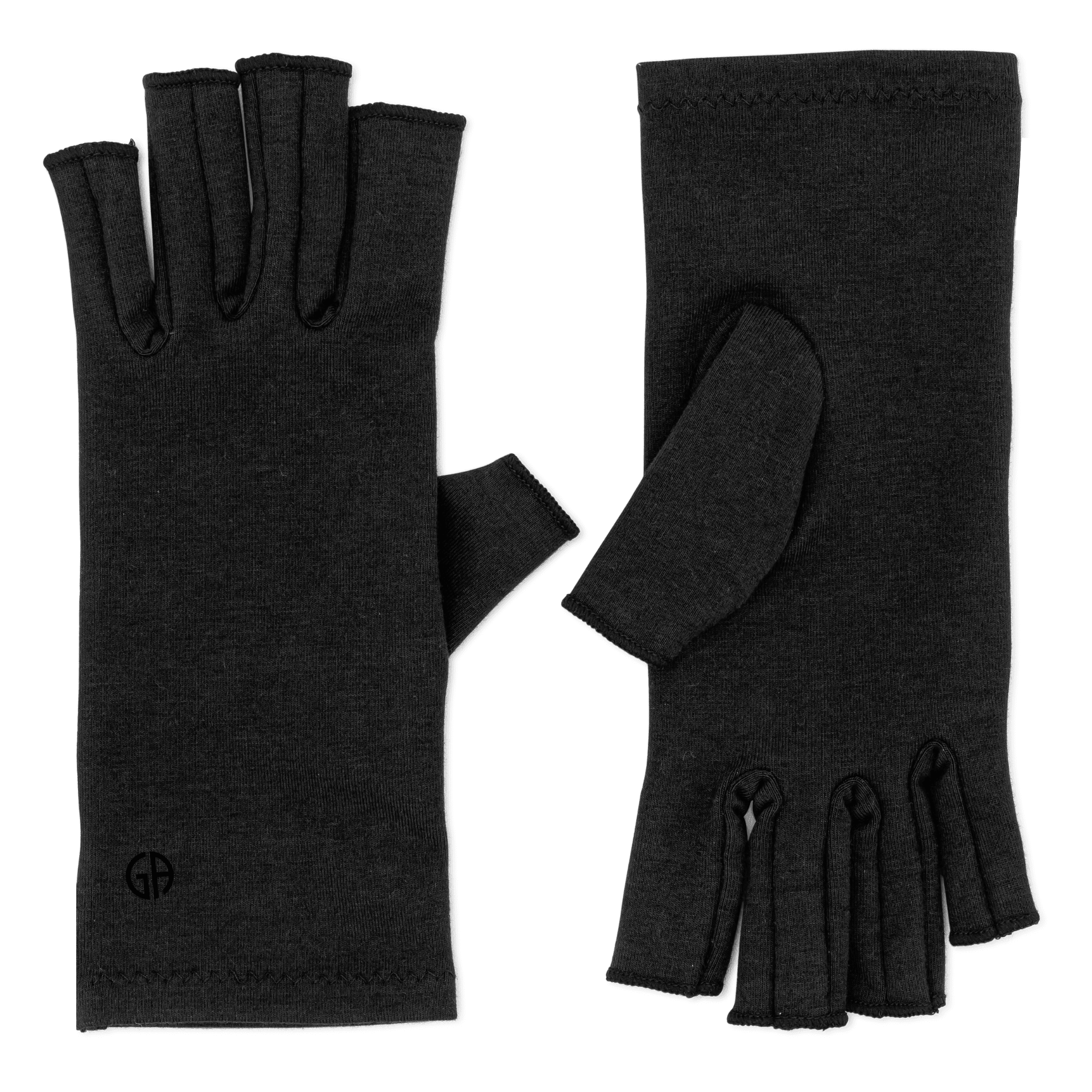
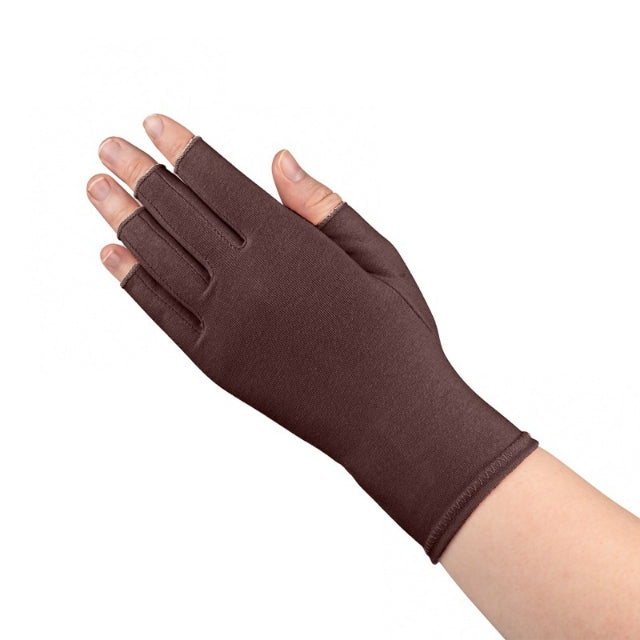
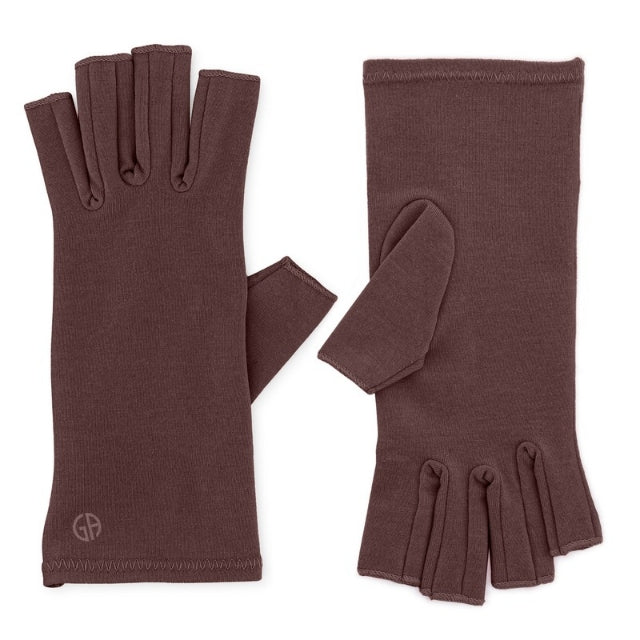
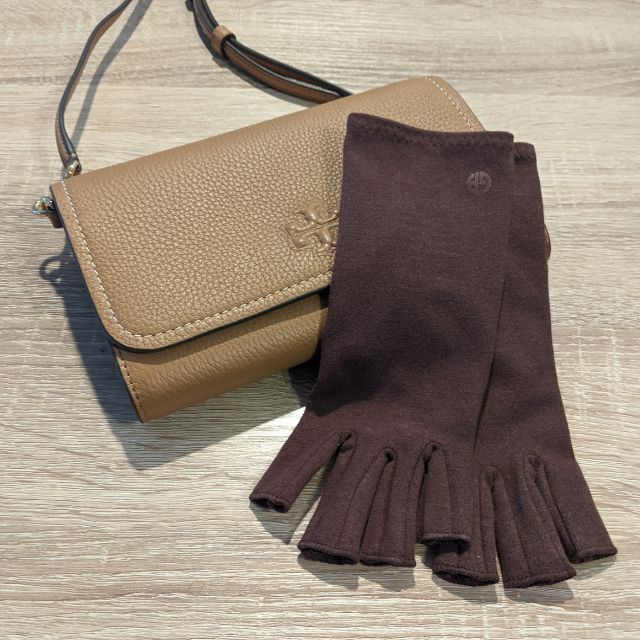

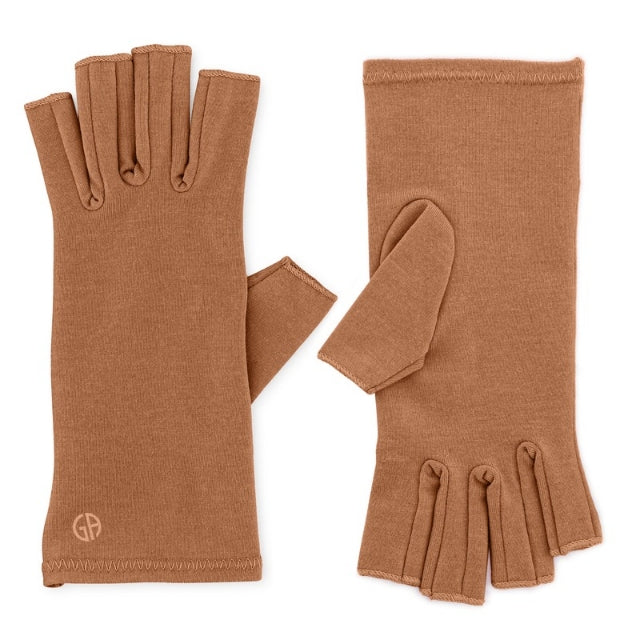
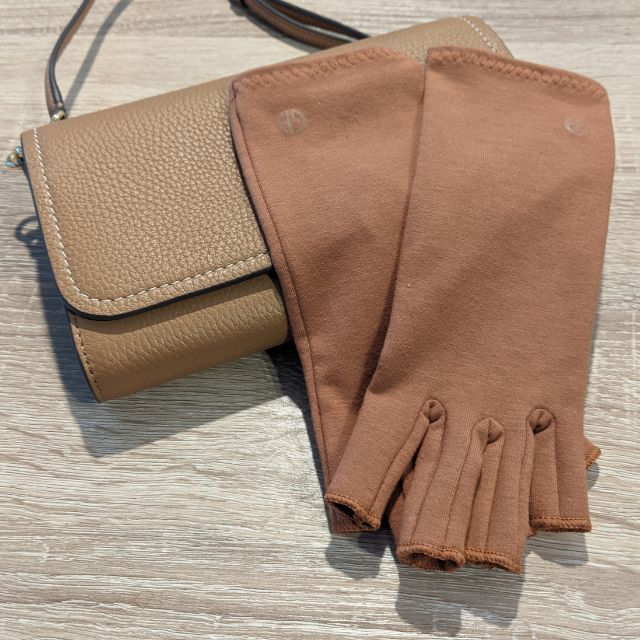
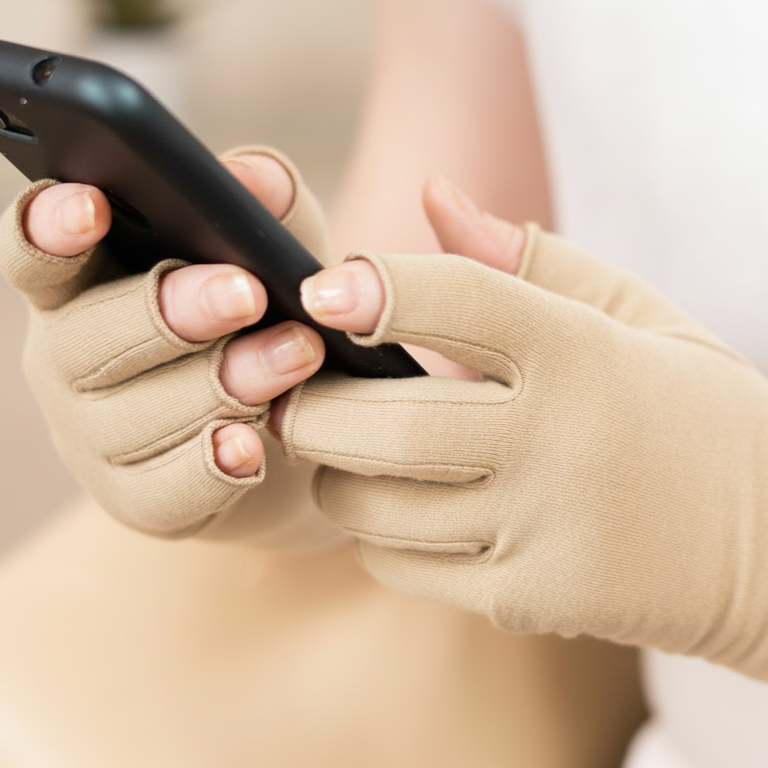
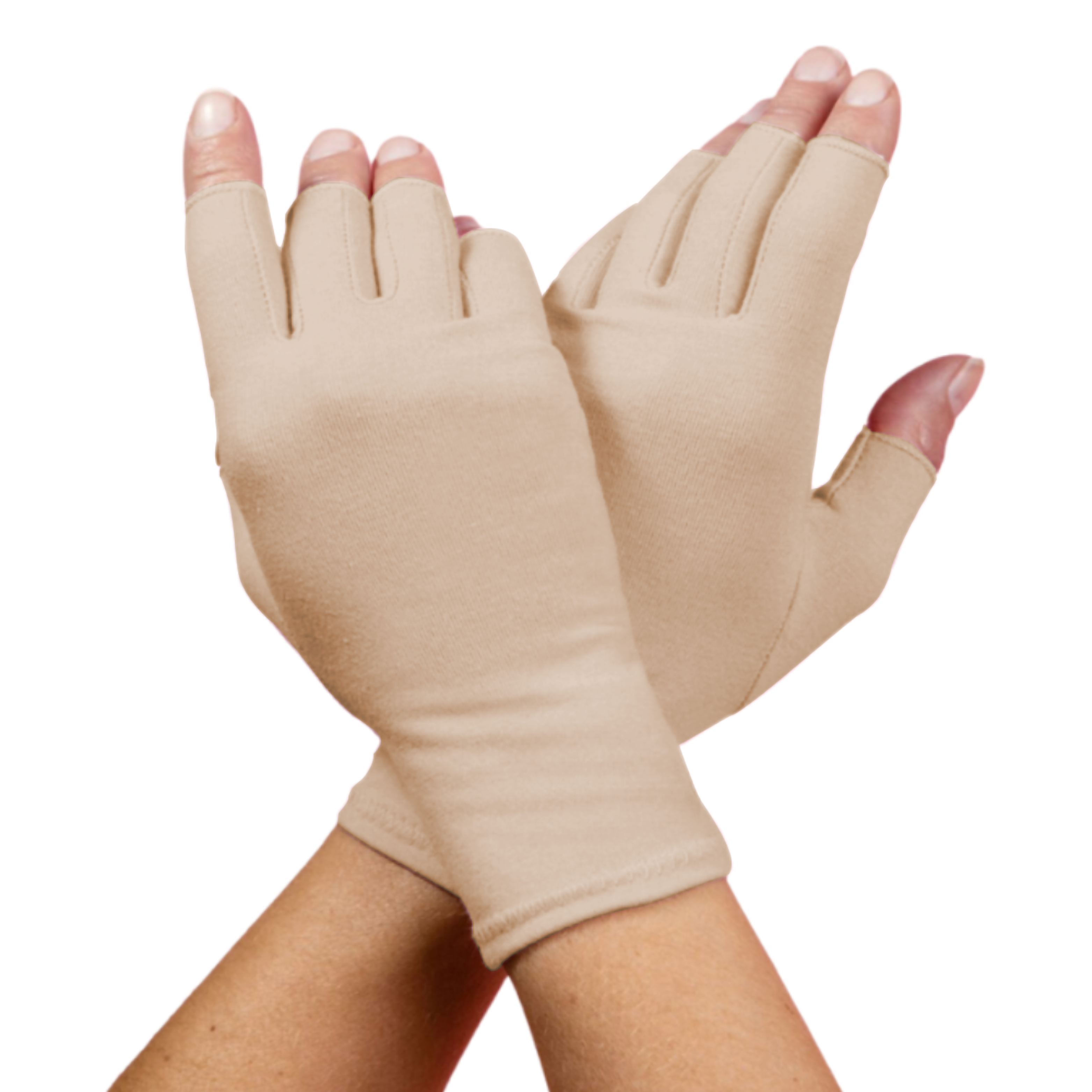


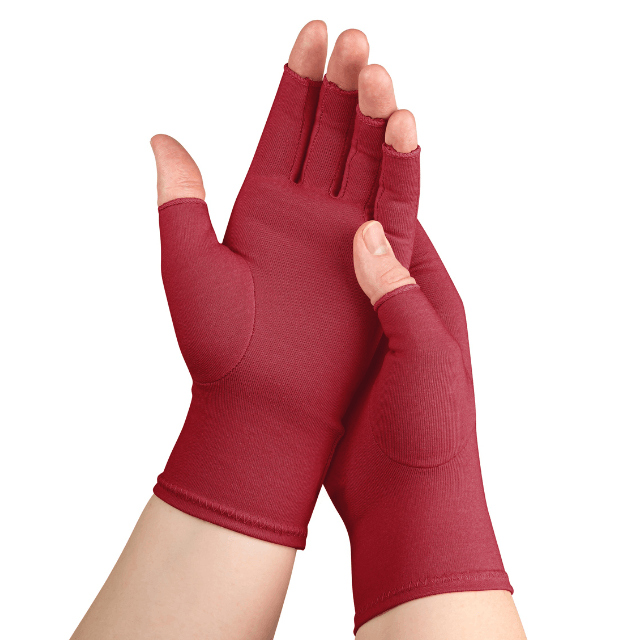
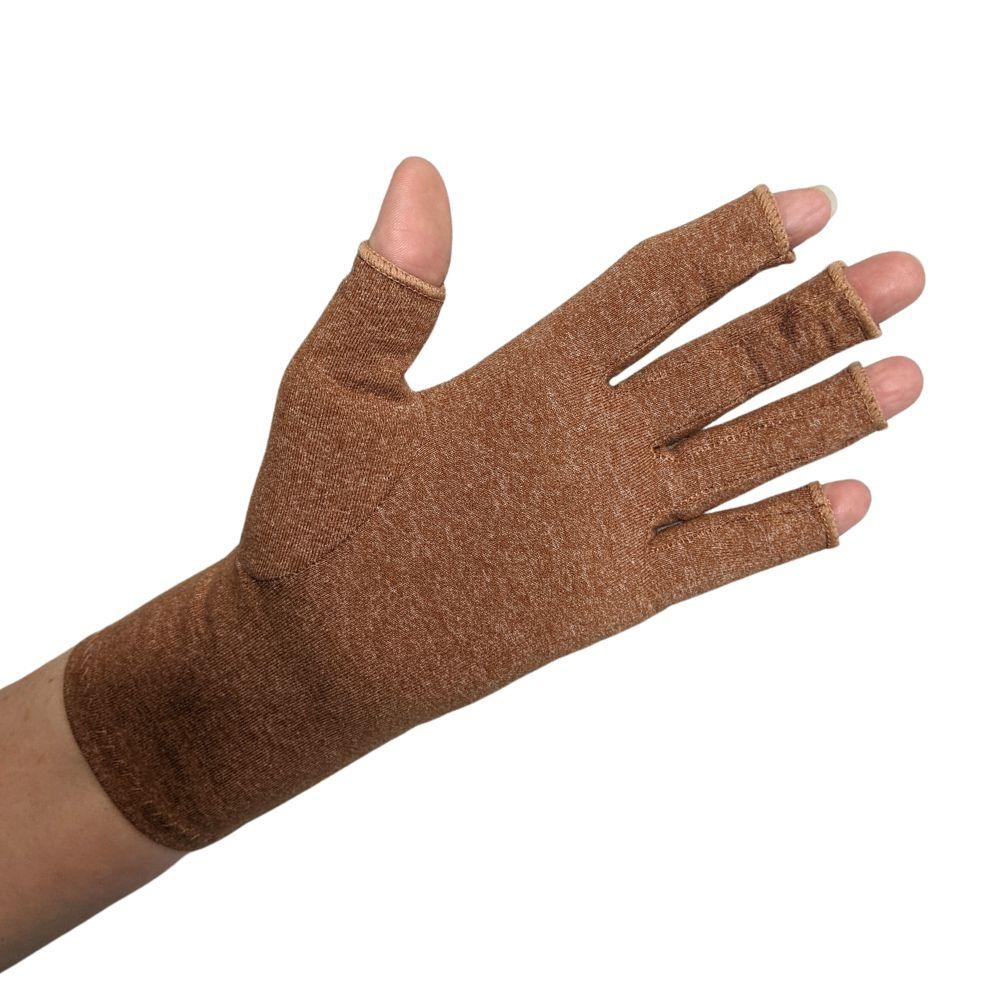
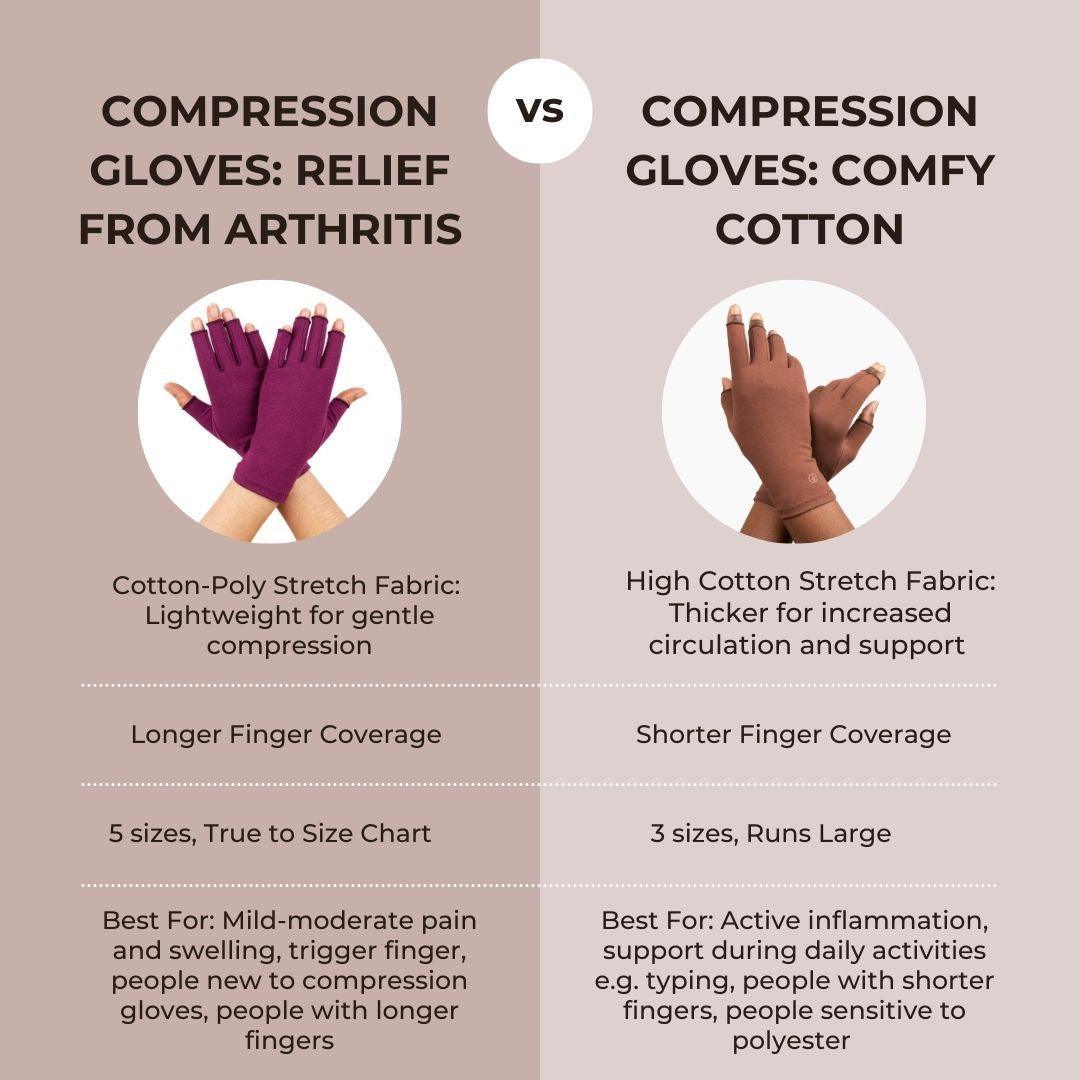
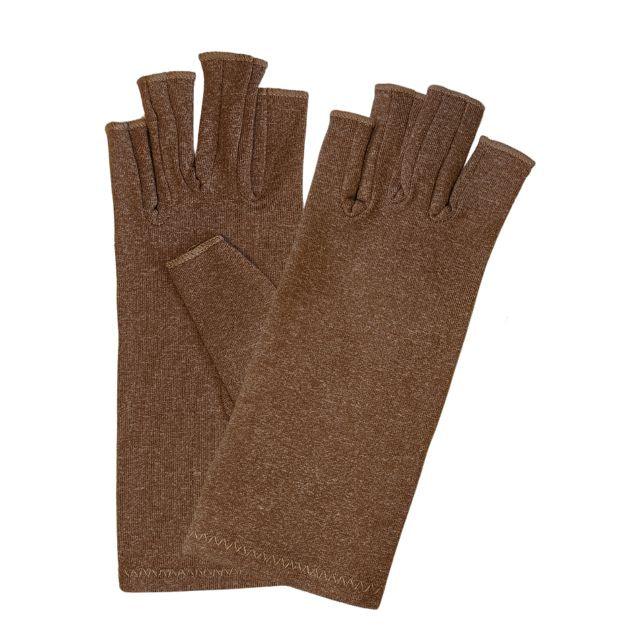
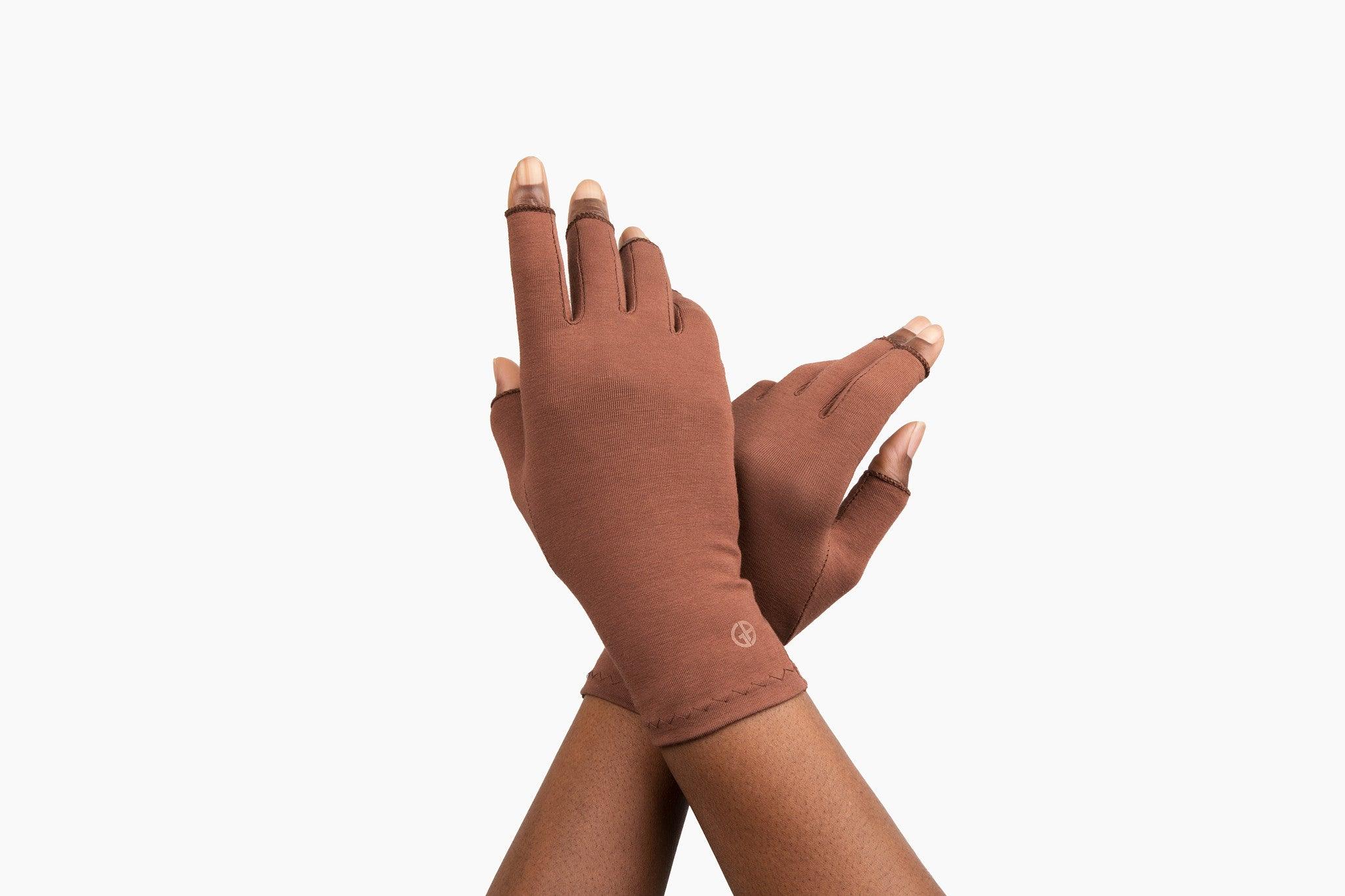
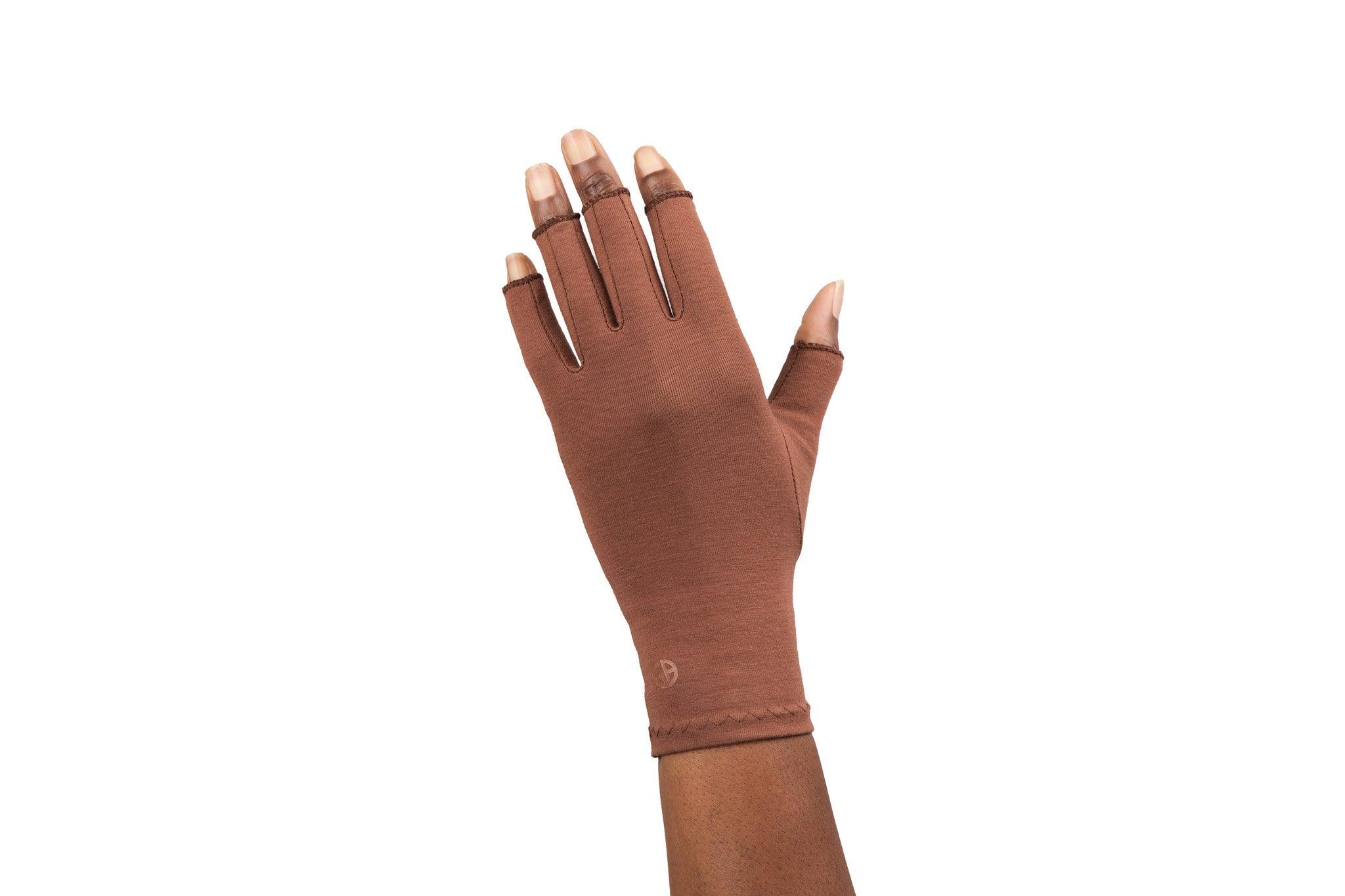
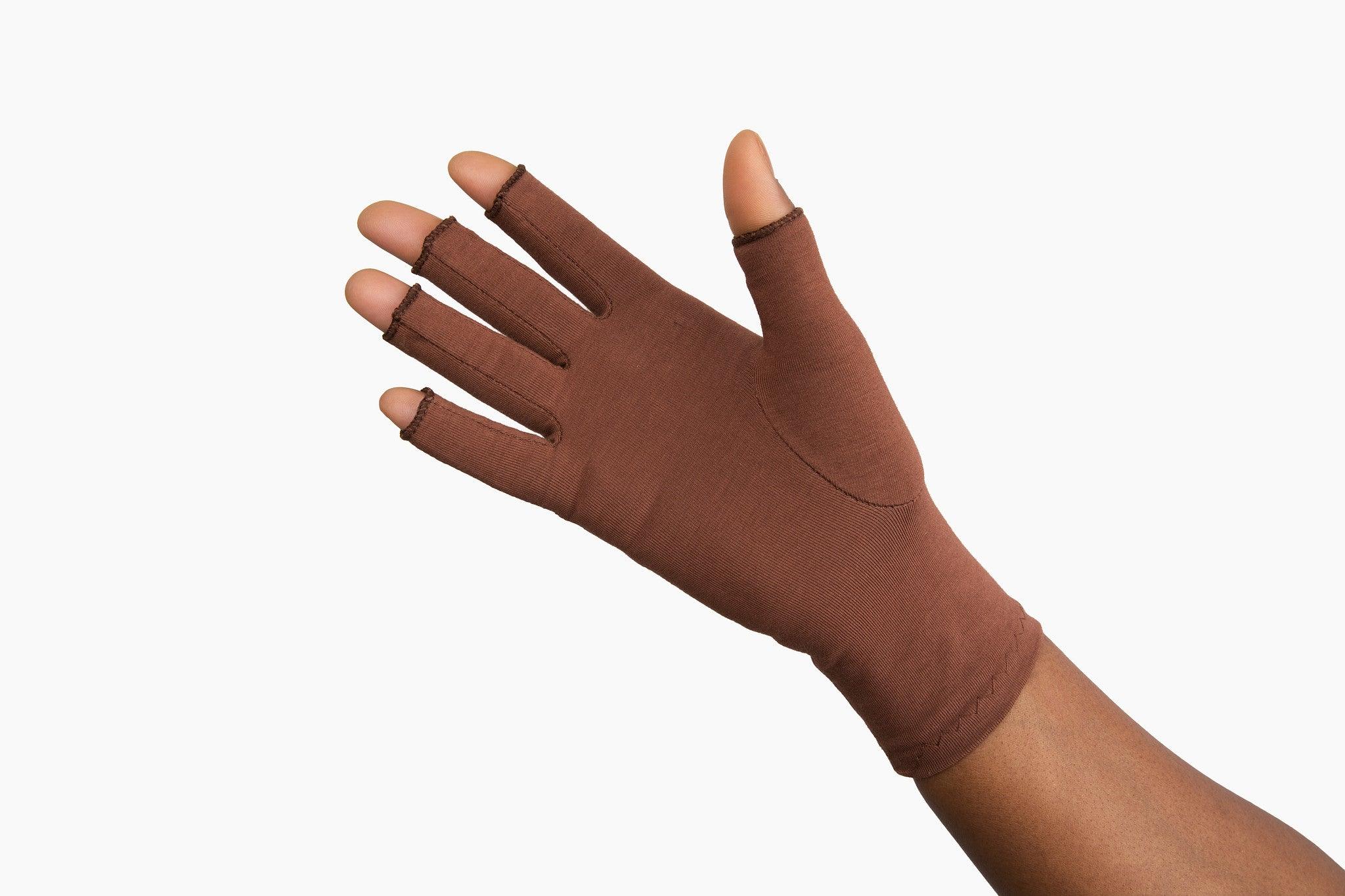
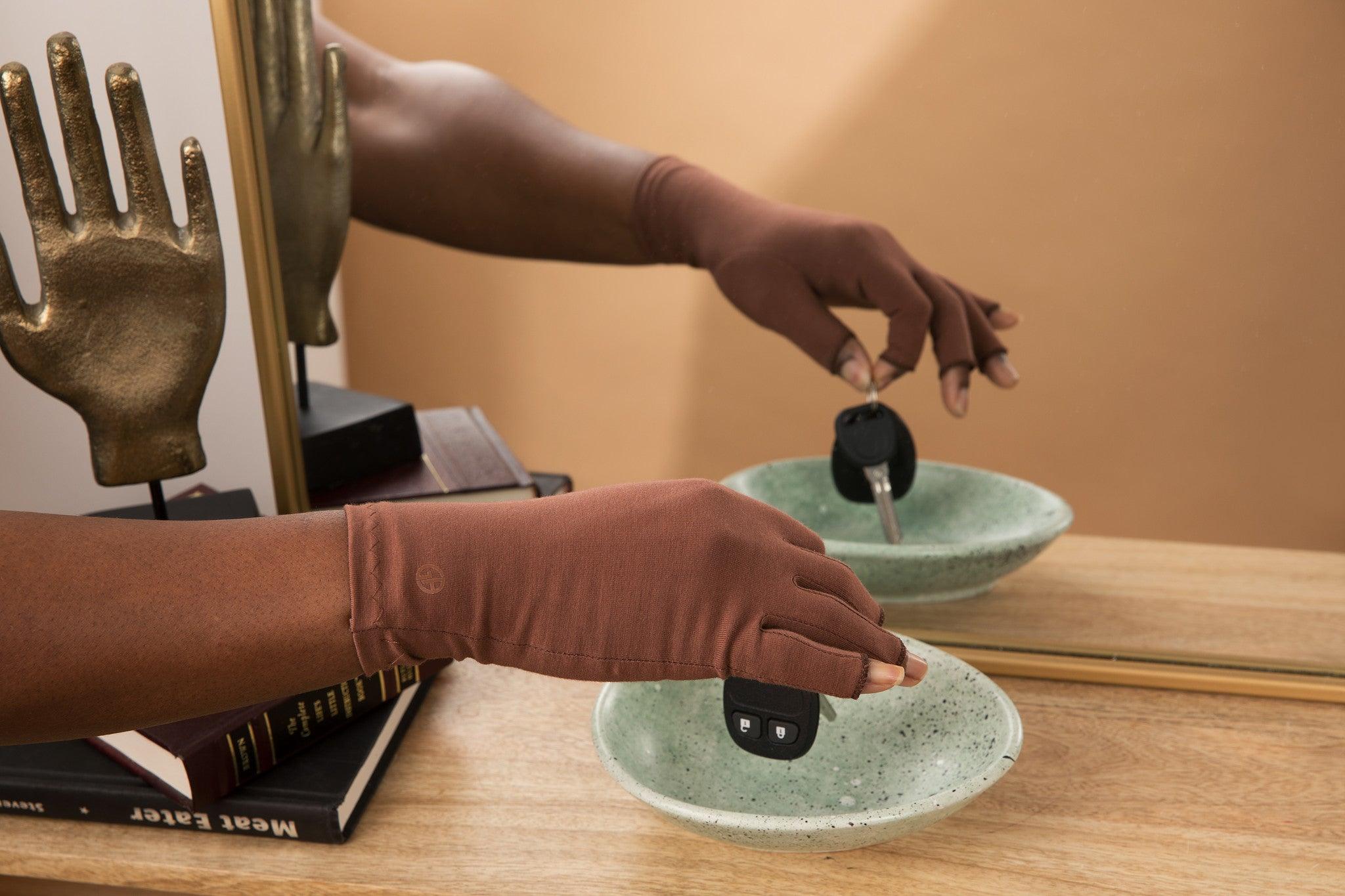
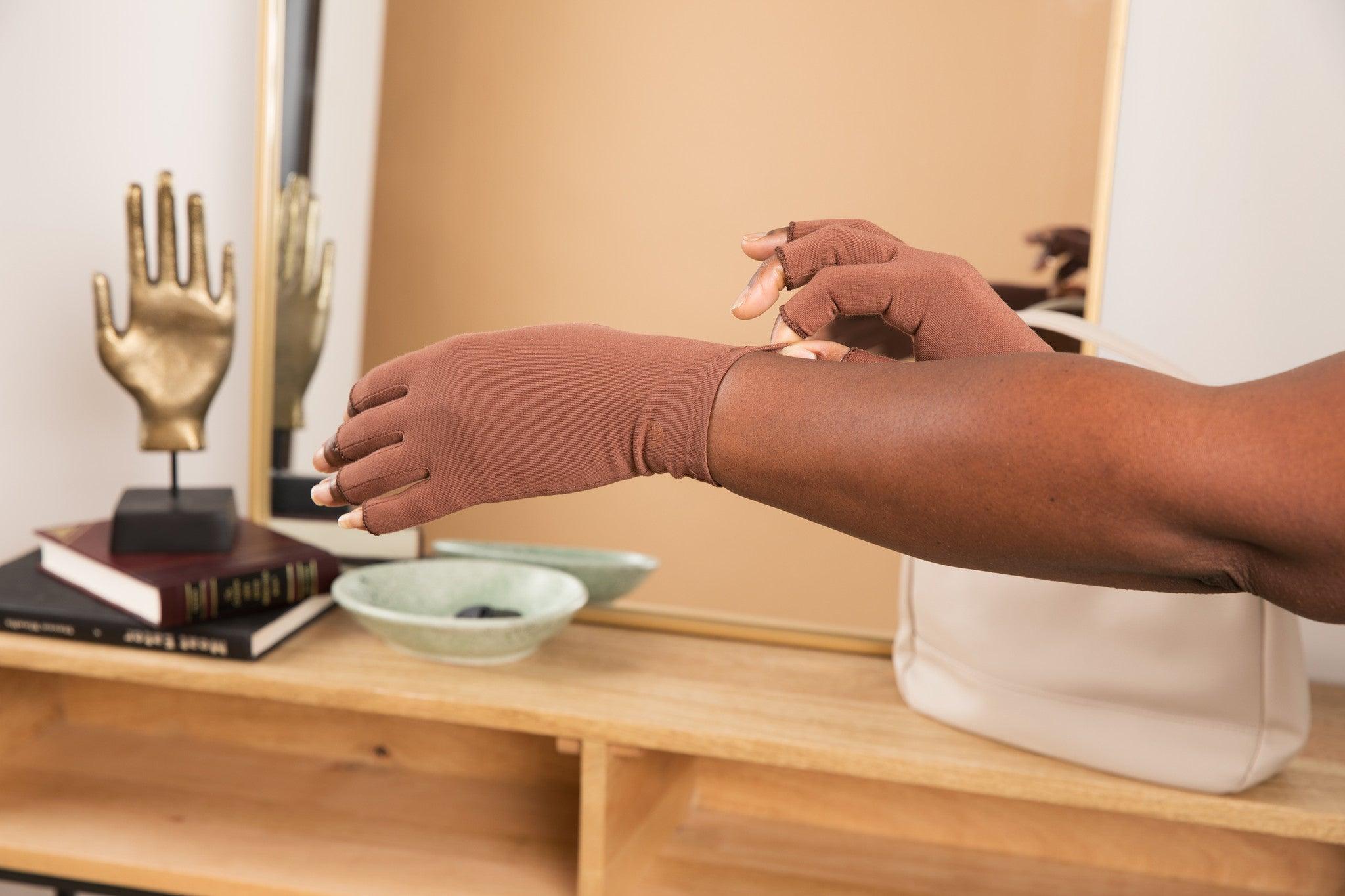
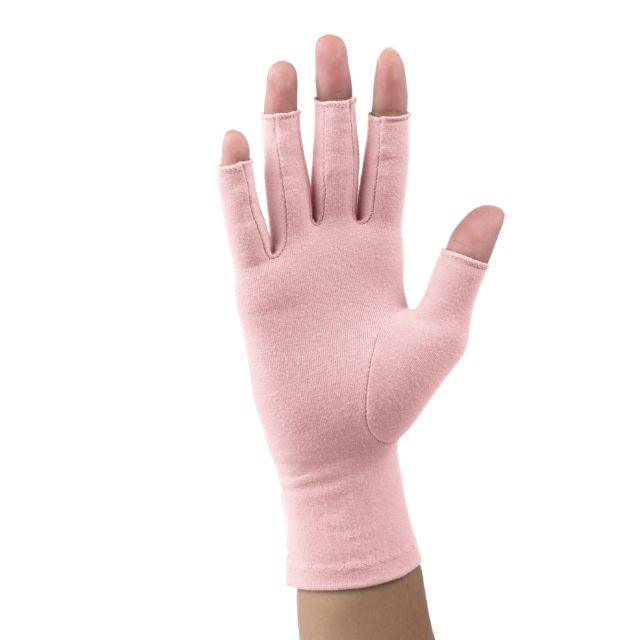
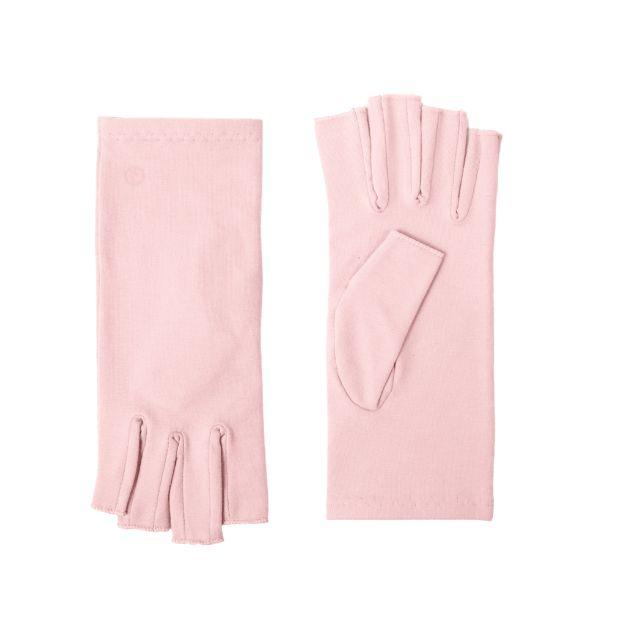
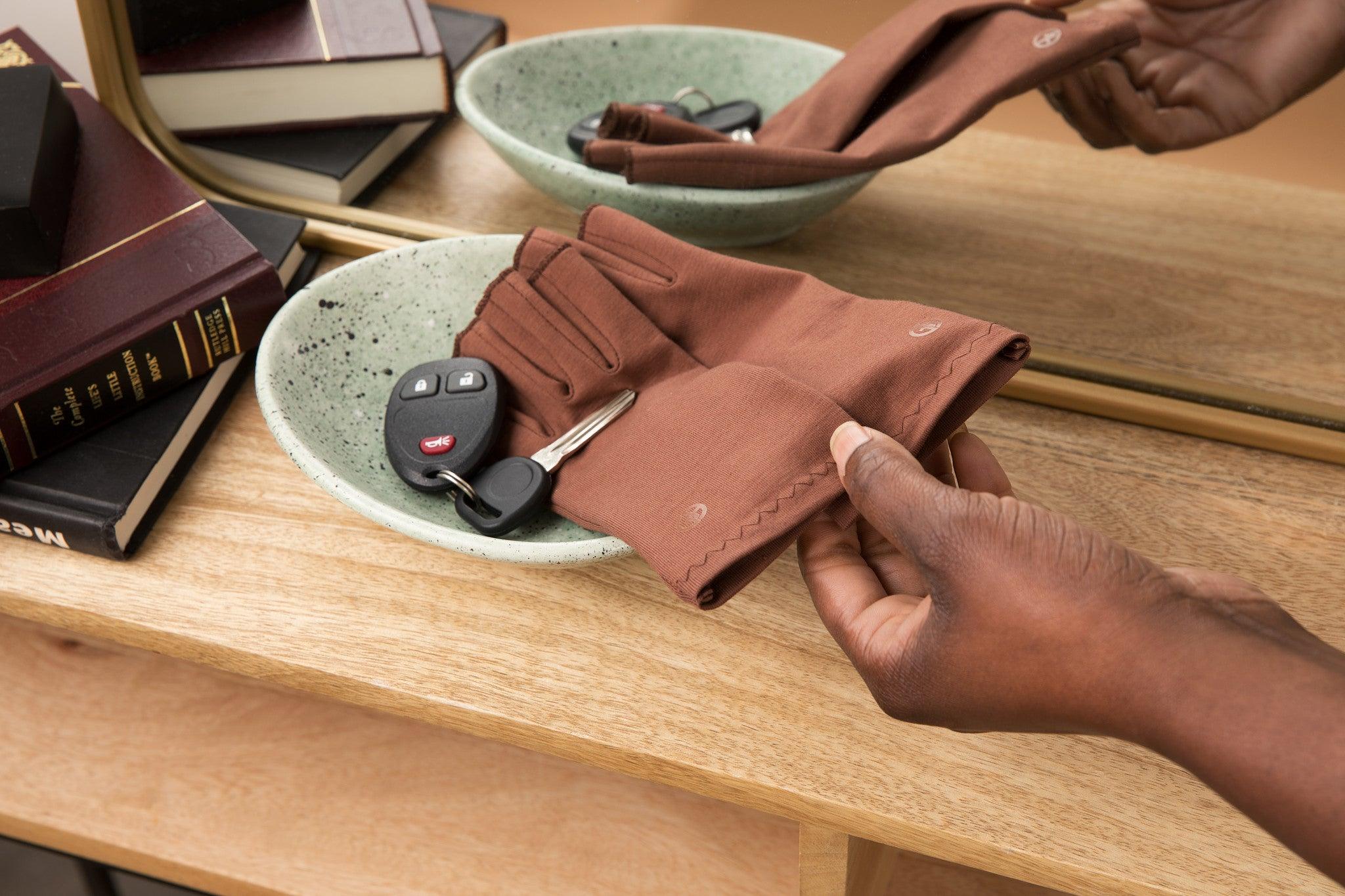
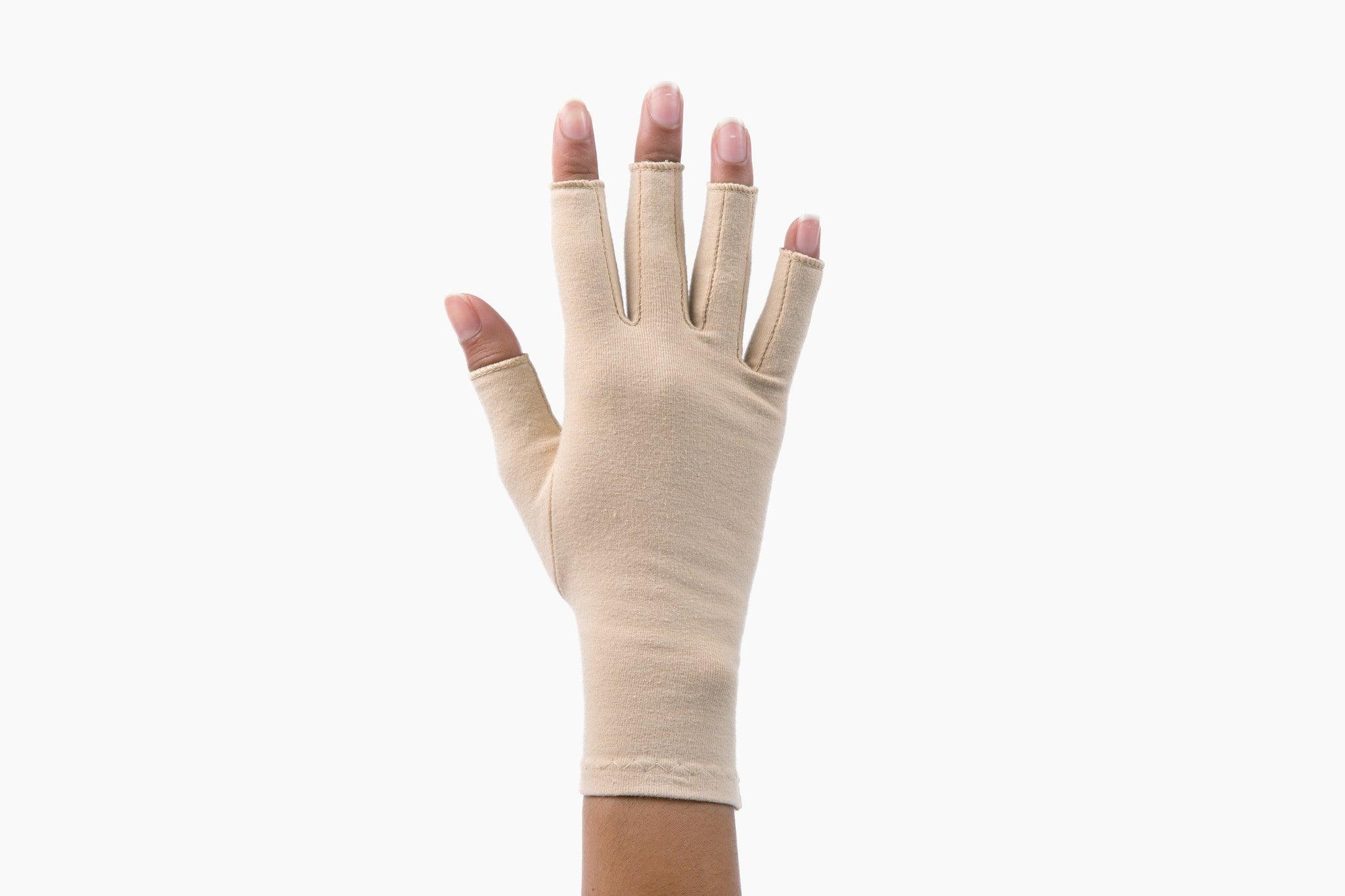
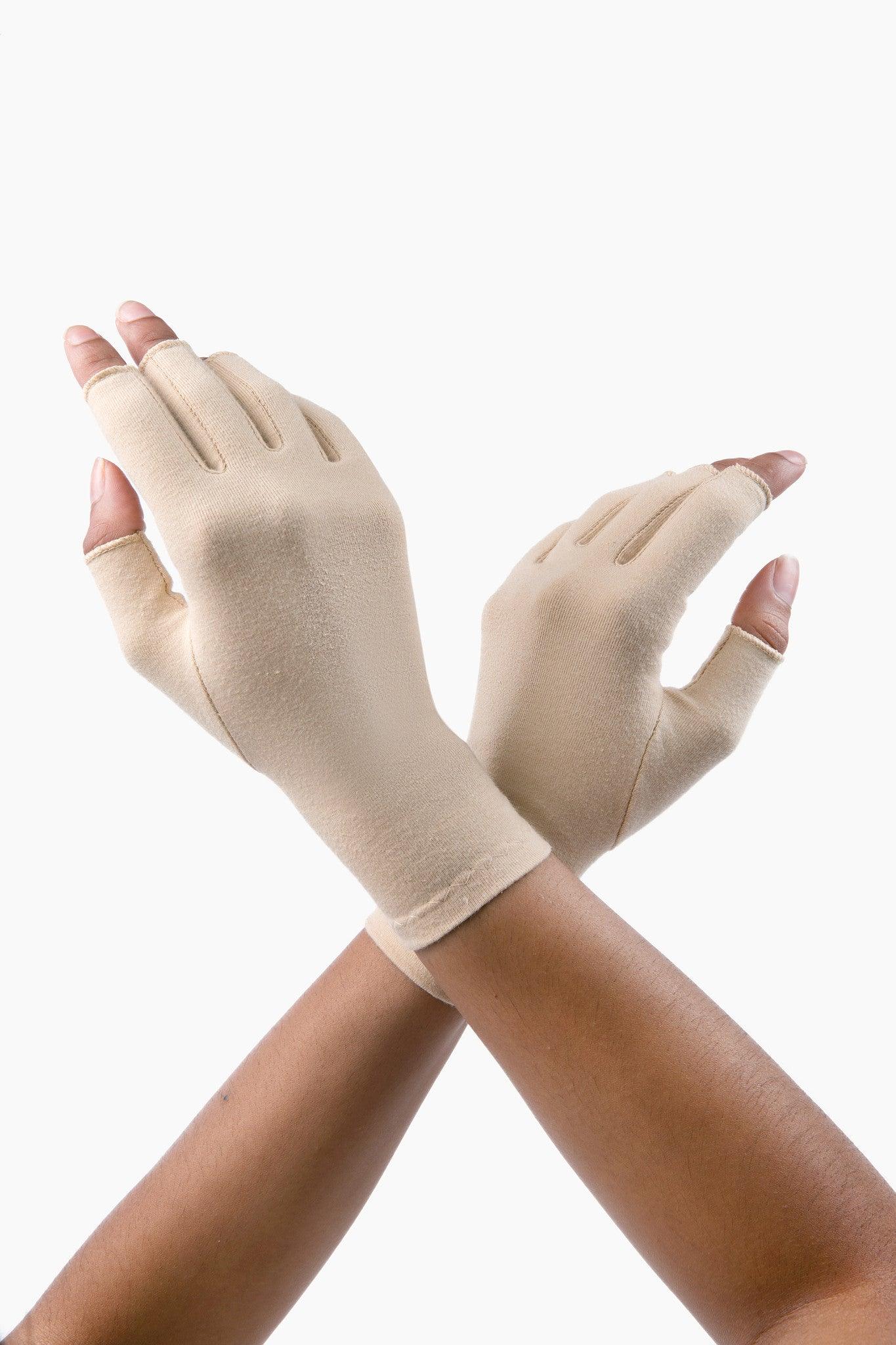
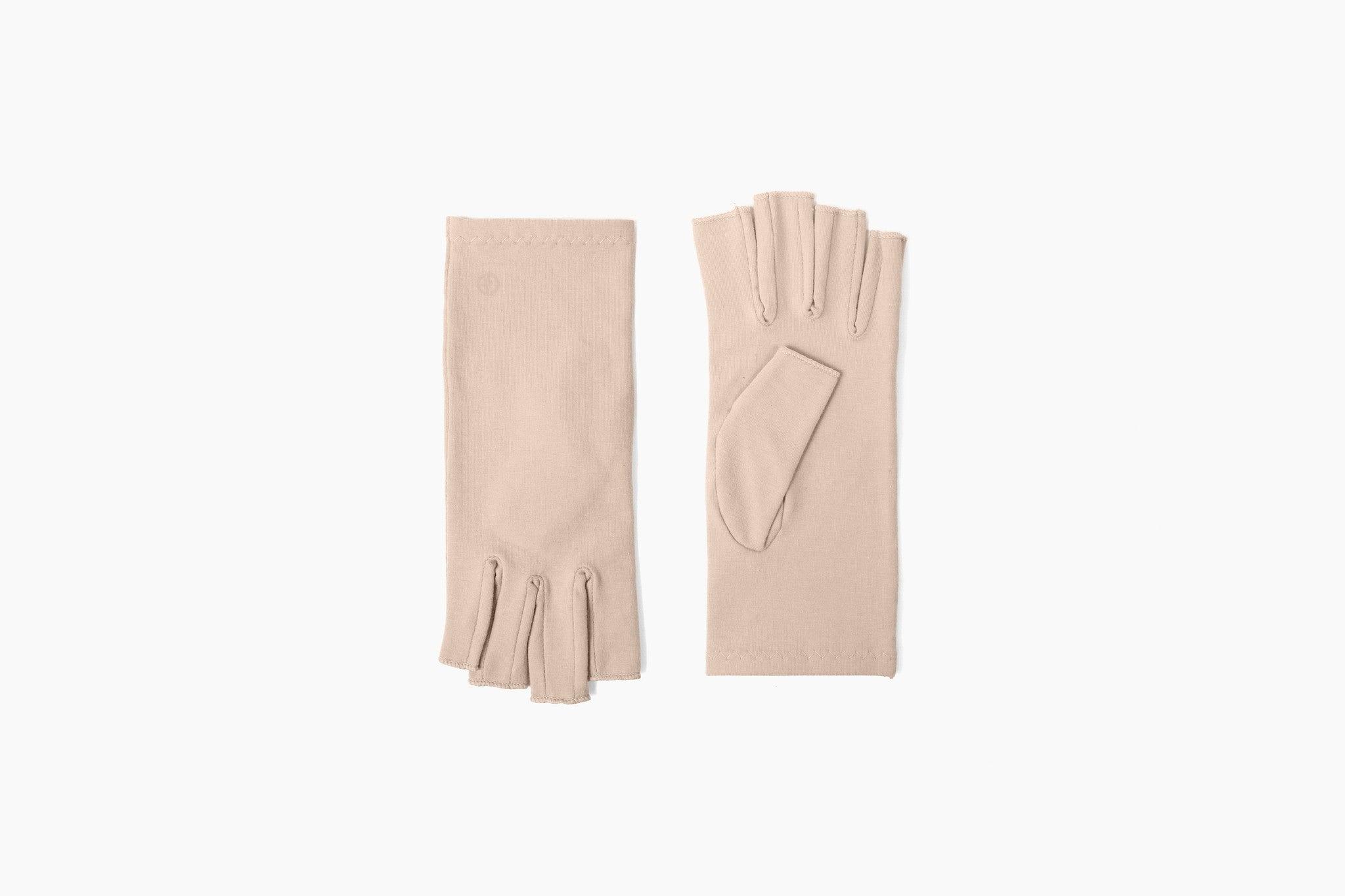
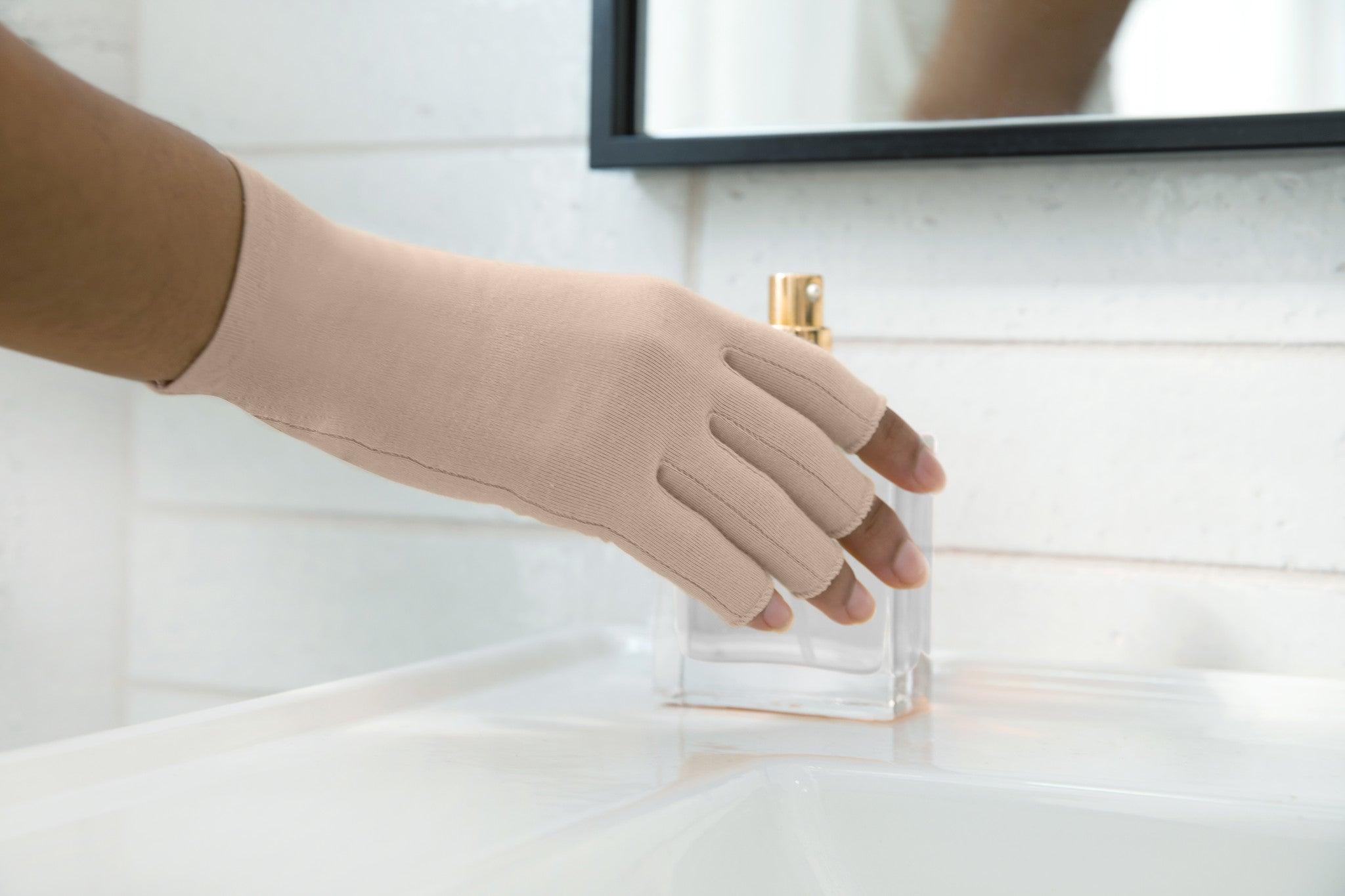

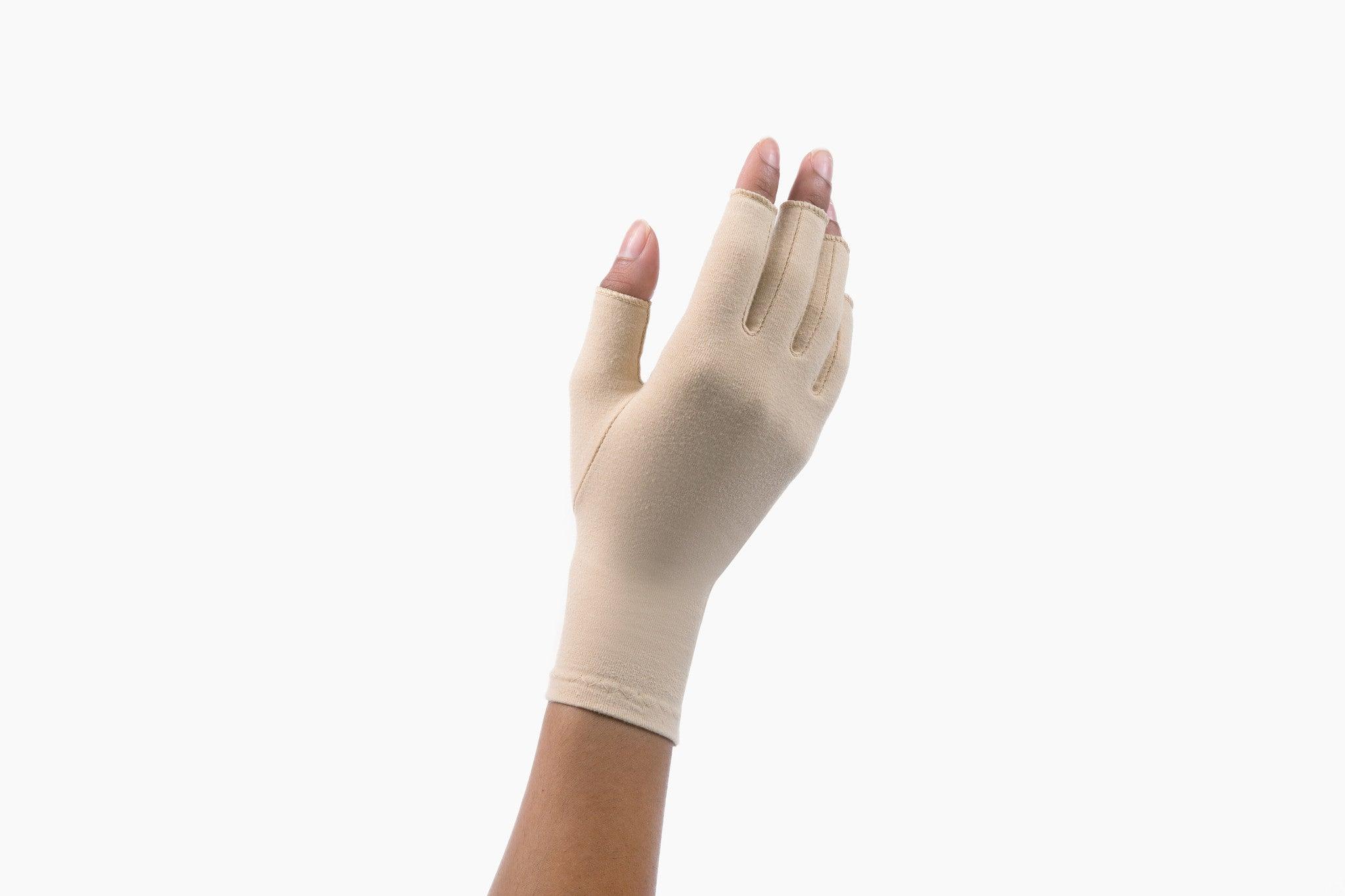
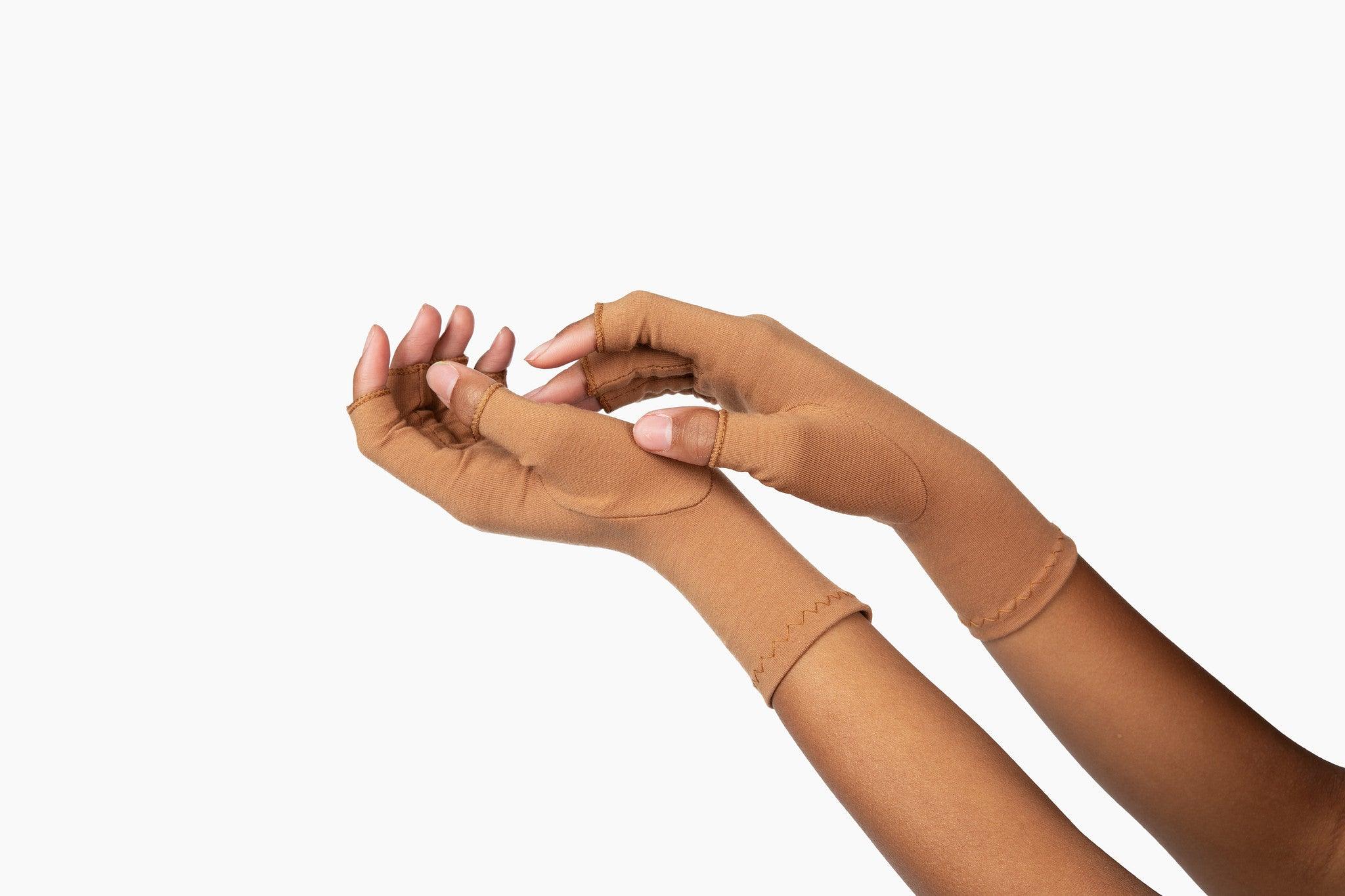
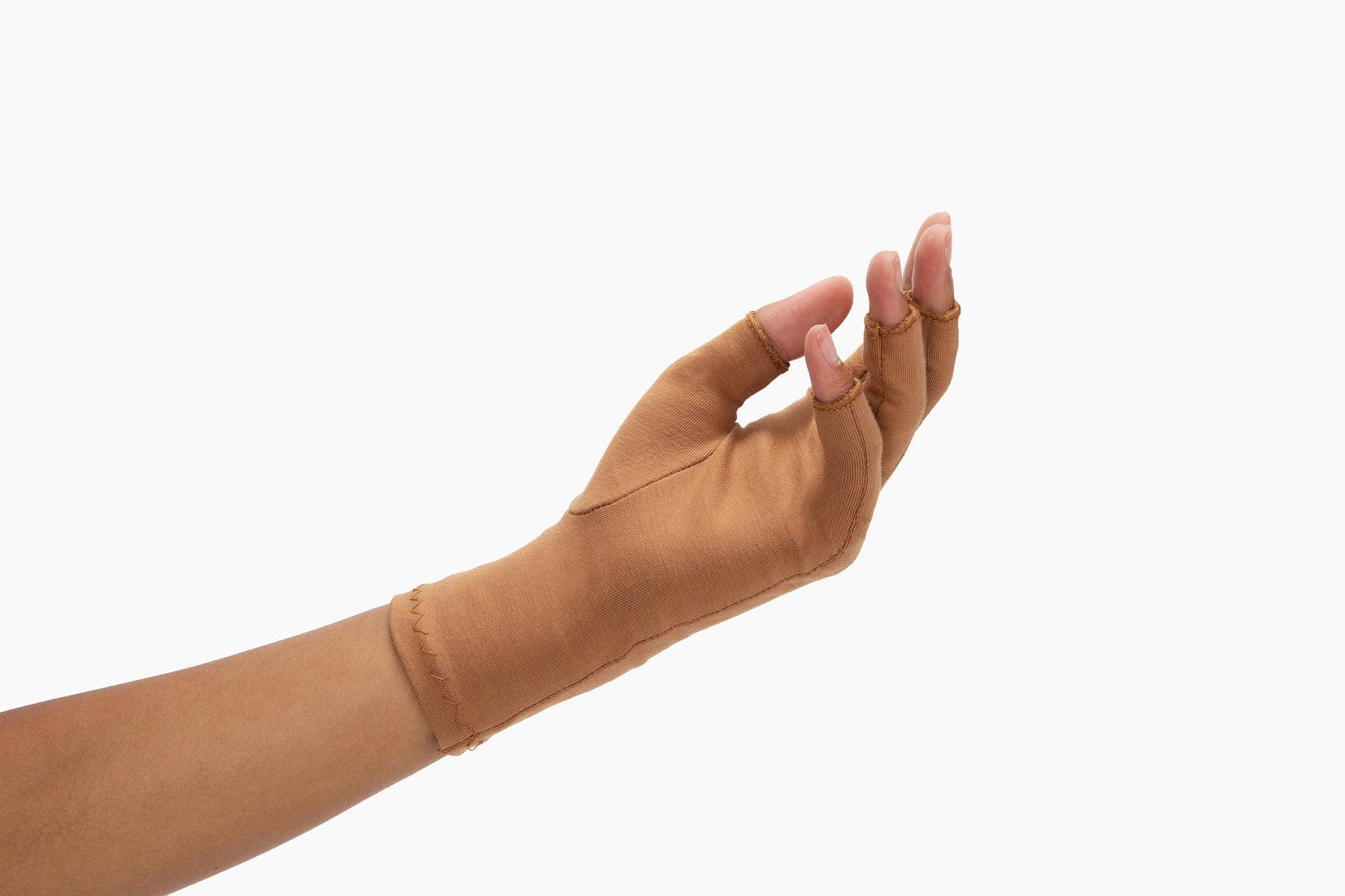
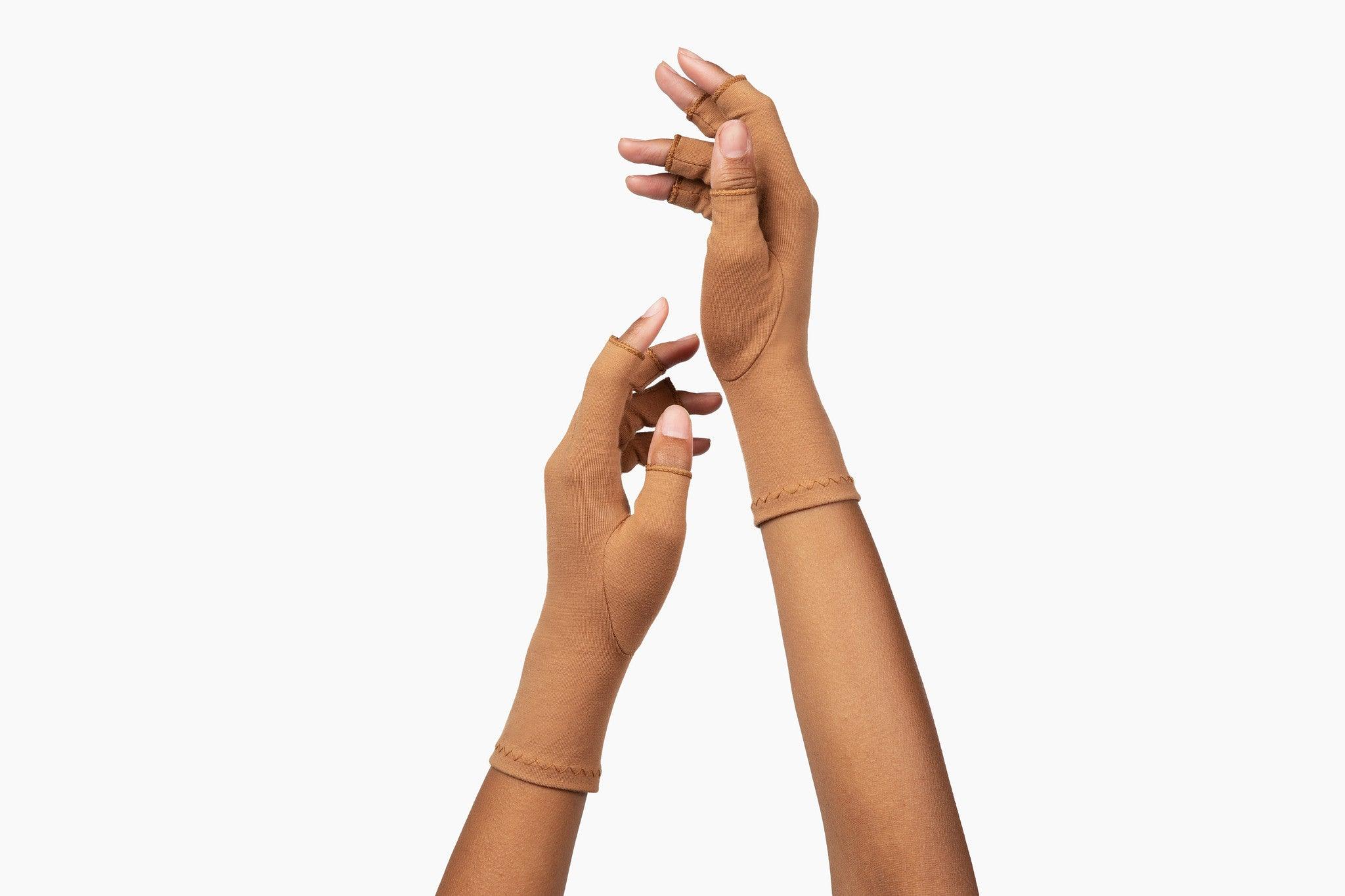
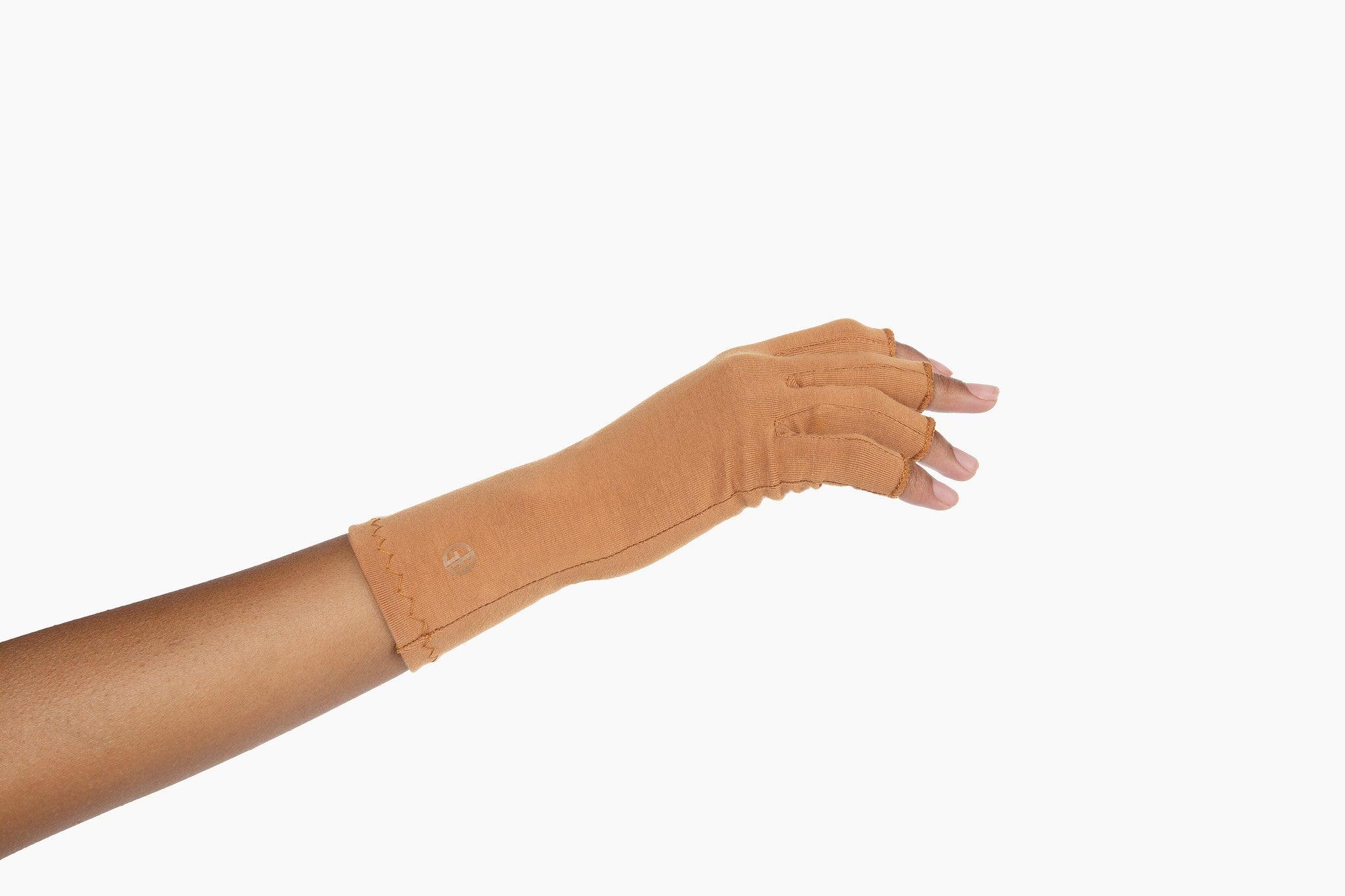
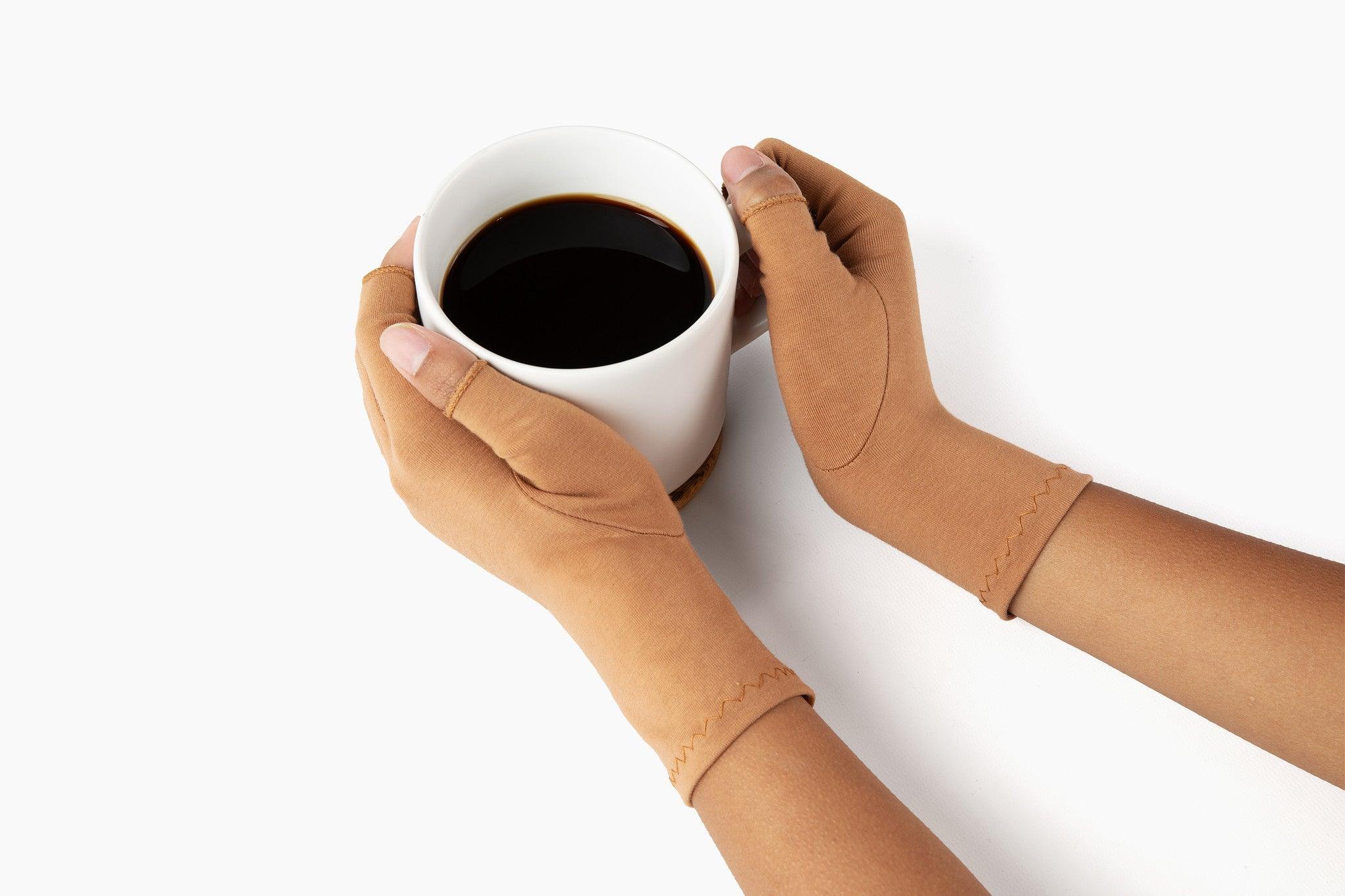

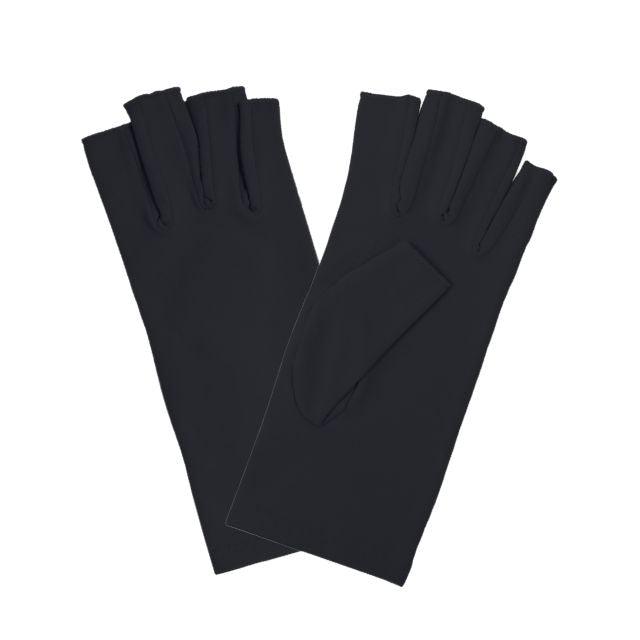
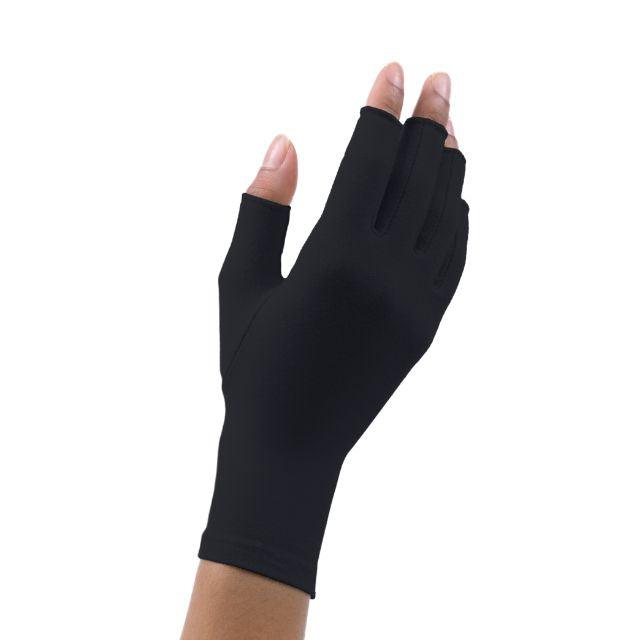
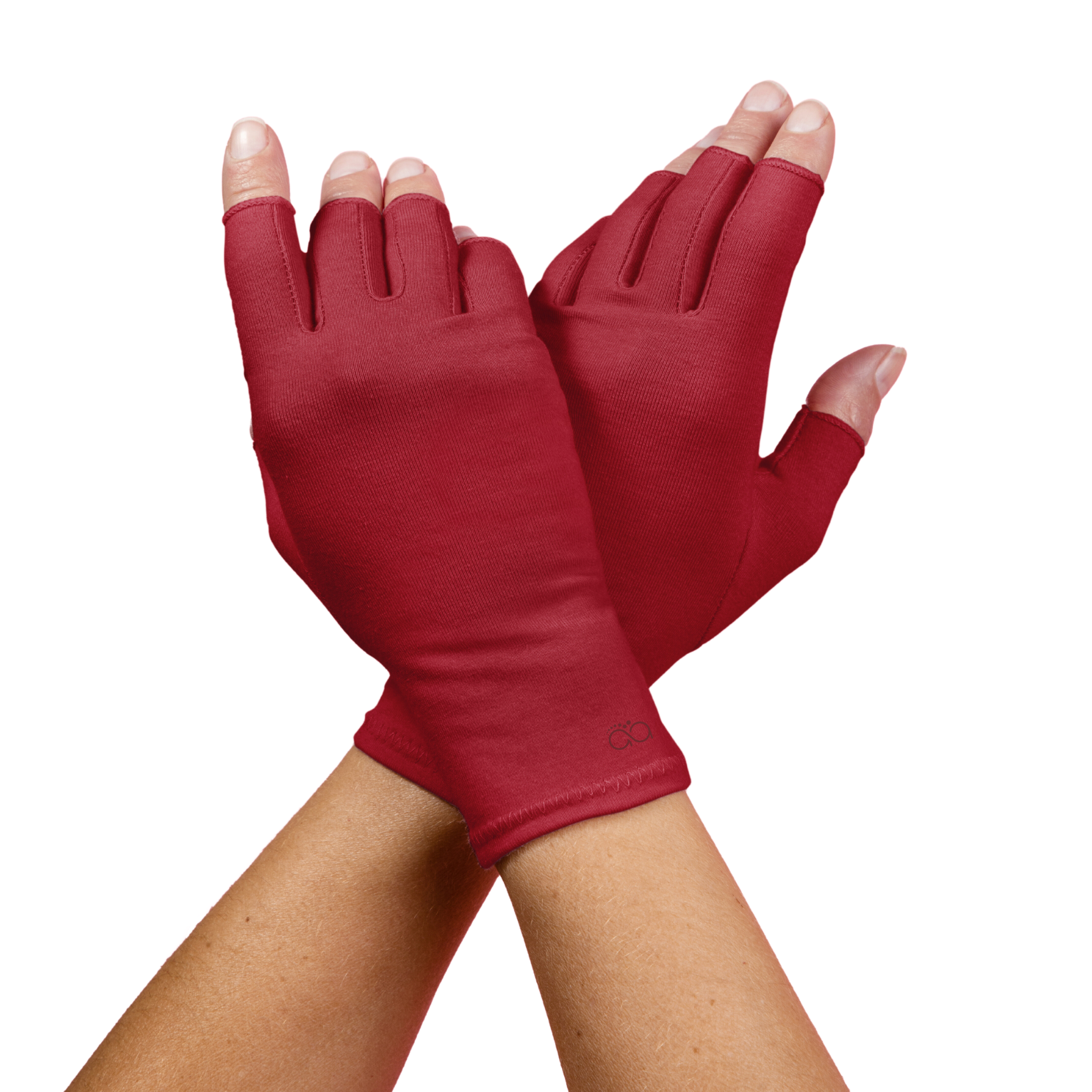
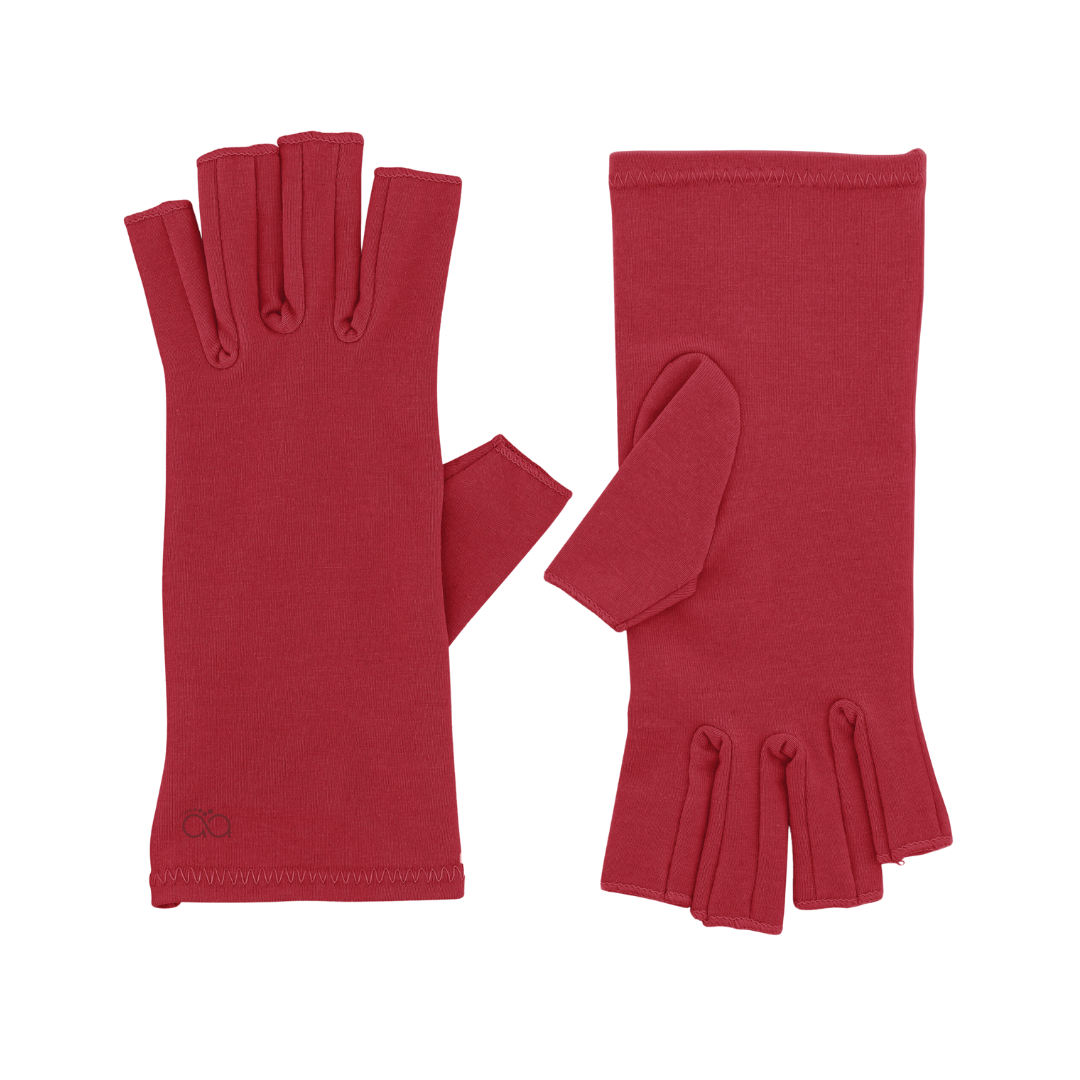
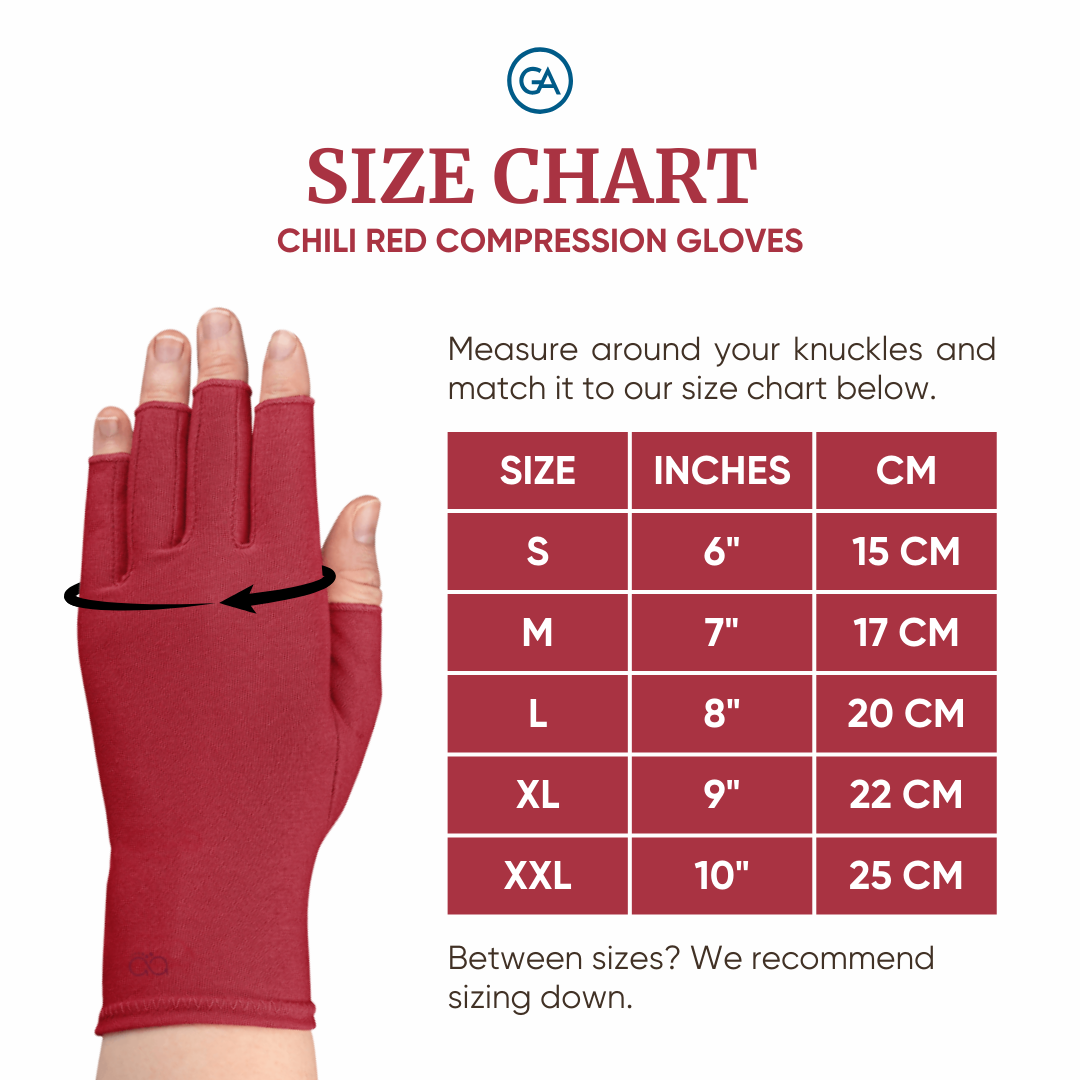
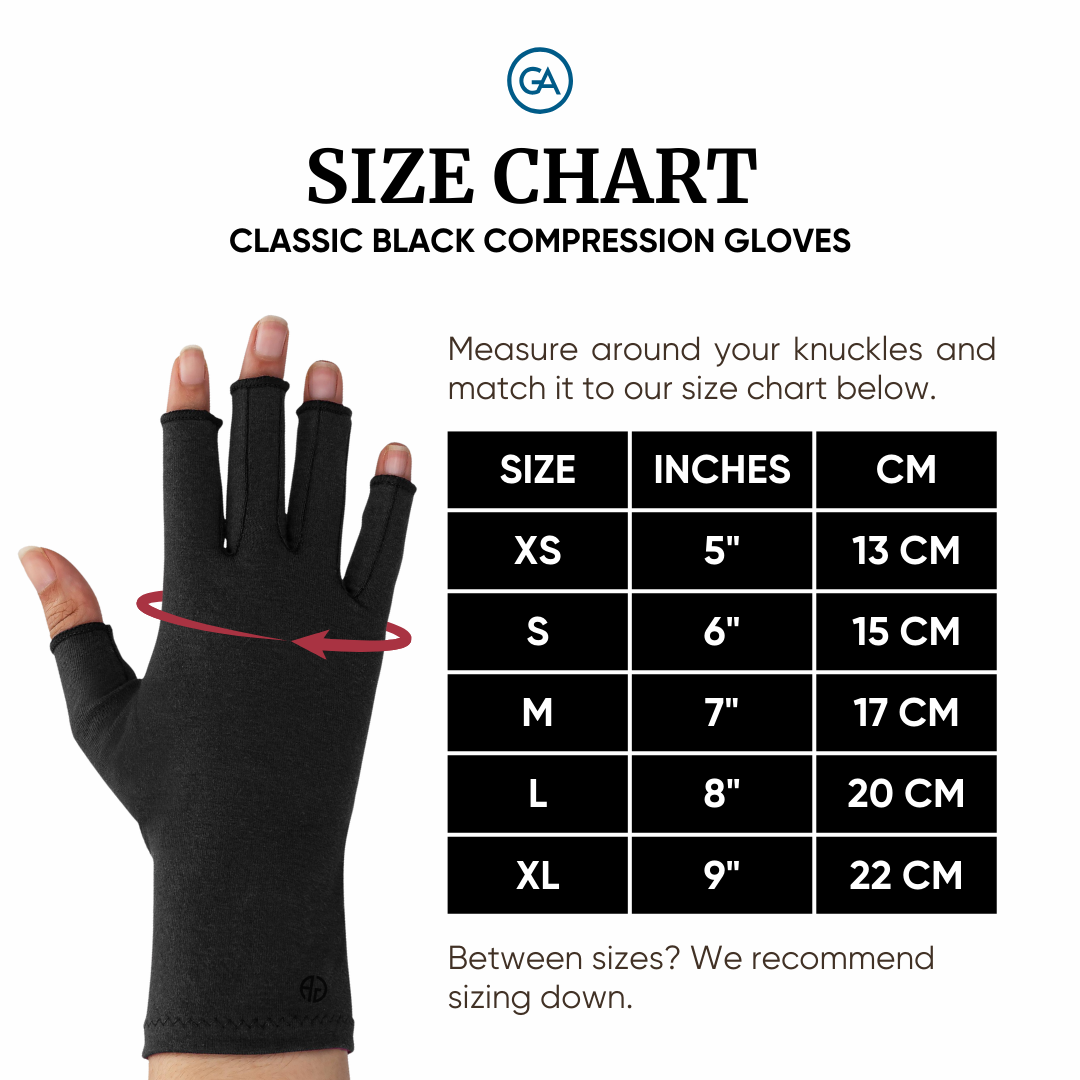

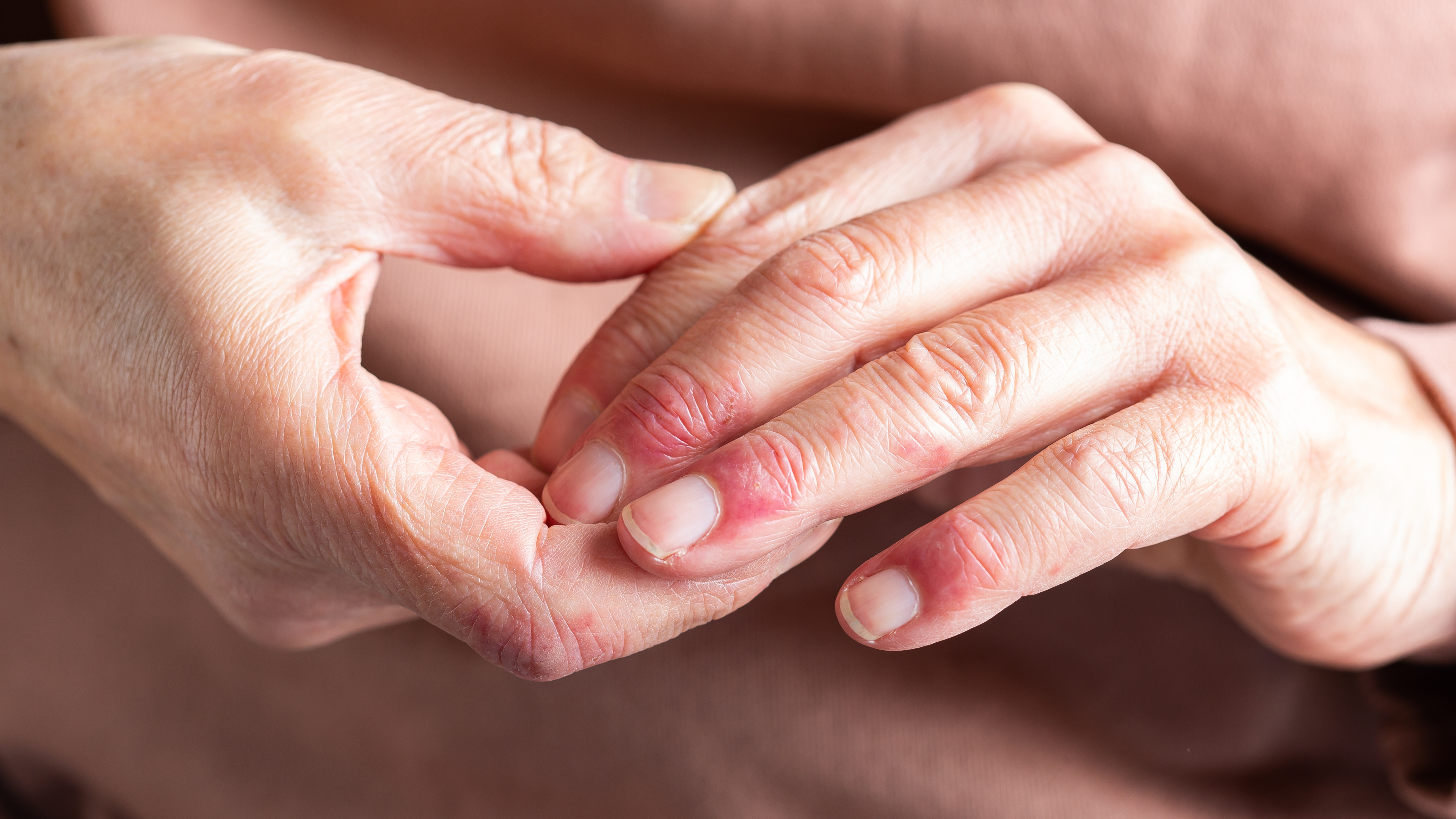
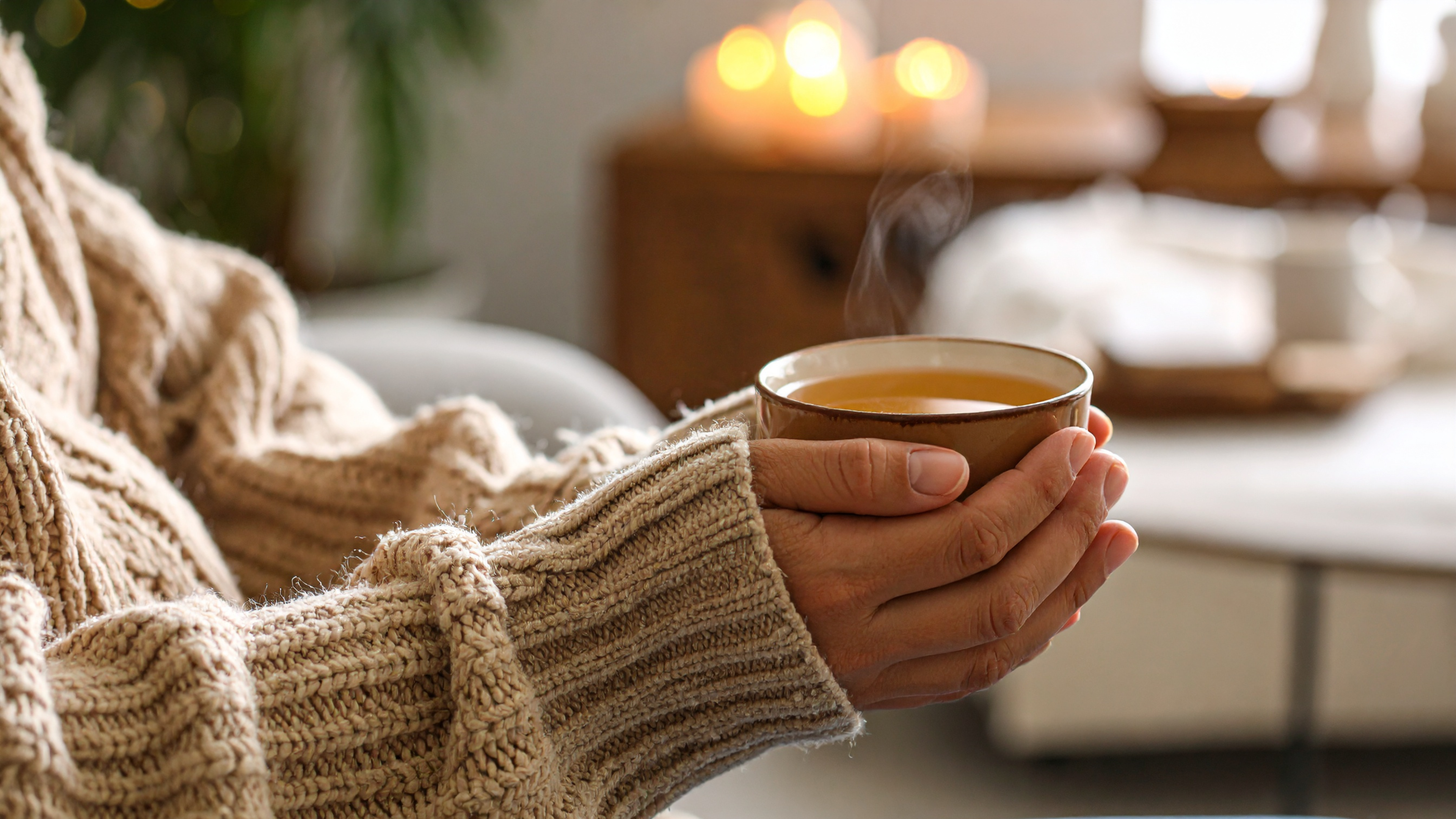

Share and get 15% off!
Simply share this product on one of the following social networks and you will unlock 15% off!